Interview 047 • Jul 6th 2016
- Interview and Portraits of Melanie Pullen by Lou Noble
About Melanie Pullen
Melanie Pullen’s work has been exhibited widely including solo-shows at Ace Gallery, Los Angeles and Ace Gallery, Beverly Hills; White Wall Gallery, Seoul; MiCamera, Milan; Wignall Museum of Contemporary Art, Los Angeles; Stephen Wirtz Gallery, San Francisco; Museum of Contemporary Art Jacksonville, Jacksonville Florida.
Links
Foreword
Over the years, we have interviewed many iconic and influential photographers, but none have affected me like Melanie Pullen. Her curiosity in pushing the limits of her viewership is extremely endearing, and her work takes aim at a violence that has now become an all-too-standard aspect of modern media. The way she talks about her work is very precise, she is fully aware of what she wants to convey, but she also allows room for it to take on a life of its own, which can be a very delicate balance to achieve. If I had a list of past interviewees who I would love to learn from, Melanie would be at the very top.
-SuzAnne Steben, Managing Editor
This interview has been edited for clarity and content.
Interview
In researching you, I saw that you’ve had no formal photography education. What kind of stuff were you soaking up when you were just beginning? What were your early photographic influences?
Well, I grew up, my grandmother was a photo editor for a nature magazine.
Audubon?
Yeah, Audubon, so a lot of it came down to these like, nature…did you read the story I talked about, the thing with the white snow?
Mhmm.
Yeah, so a lot of, that was such a heavy influence, and still is, on so much of my thinking. I think when you learn…just something that simple as a child, you start looking for it in everything. It becomes ingrained in you, it’s almost philosophic, in this early age.
Where you had seen a picture that was all white snow?
White snow! And she said, “if you look closely, there’s this story, there’s little foot prints.” A lot of my influences are from photojournalism…I’m not very inspired by fashion photographers, some art photographers, a lot by movies. Movies are huge part of…because it’s storytelling to the nth degree. But yeah, I think my early influences would be French nu-wave, and Amadeus was one of the first movies I fell in love with. About being able to tell a story in a picture and not just motion. I fell in love with Stanley Kubrick when I was a little girl, and The Shining, and I realized early on that I used to want to make films when I was little, and I did. I had a video camera, I was always…
Like a Super 8?
Yeah, I had a Super 8 and a VHS, and all that. I have all these crazy films I made, I would cast my family…but with him, I got really fascinated, I was like, what is it that’s so different about him? And I realized, you could almost push pause, and Hitchcock, too, pause pause, and there’s a picture. And the picture, the story exists in the completeness in the movie, but then, you can pause any frame and there’s a story. From High Fashion Crime Scenes, 2003-2016
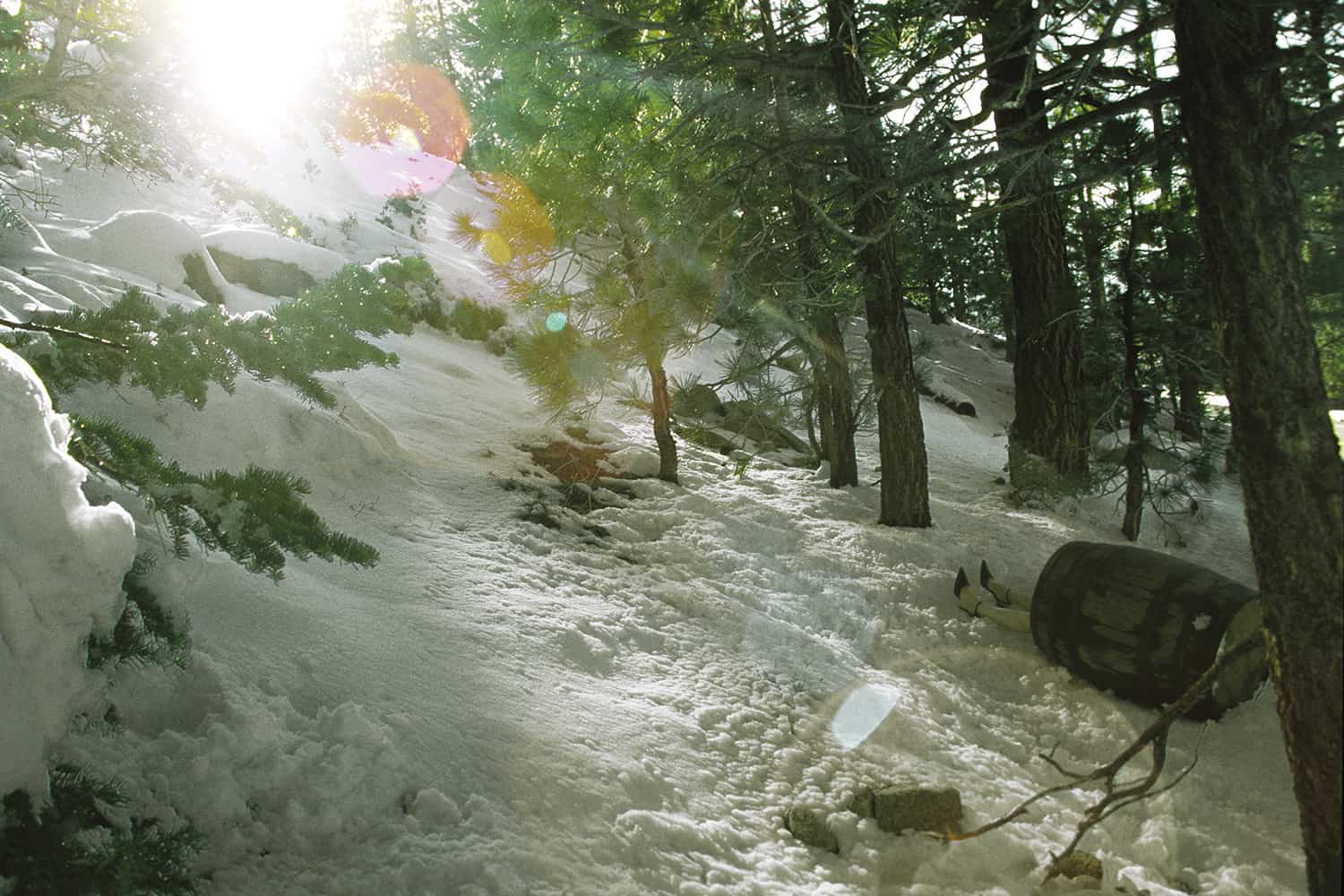
Totally, the way he composed every single shot.
Every shot. And so much of cinema, you see just…wasted film. Like, why would you even take, you know, if you’re a photographer, you’re like “why that shot?” you know? Or like, yeah sure, you have a movie, but why waste the shot? Bertolucci, I love Bertolucci, have you seen The Conformist?
No I haven’t, I’m familiar with it, but…
Ah, just one of the most visually stunning, maybe the most visually stunning movie ever seen, you should check that movie out, it’s crazy. Again, just that understanding of film that’s just like a tool, but a story. That’s something that you see with the great photojournalists, as well. Their ability to capture a moment, which is very different from what I do, but they’re capturing a moment that is so profound and frozen in time, it’s a complete story.
How did you end up in photography instead of film, then?
Well, as a kid I was doing a lot, I actually have a ton of art films, nobody’s seen them, I used to show them at my house as a kid, I used to do these crazy movie nights. I at one point realized I wasn’t very good at it, ahahhahaha
Ha!
There was this moment where I thought, “how could I really evolve into what I want to be?”
What age did you figure that out for yourself?
Oh, like sixteen, real kid. I graduated high school when I was fourteen, so I was already doing things, and I was working a little bit, too, and I was very into art stuff. So I decided to stop making films, and then I subsequently got a camera, I had a camera, but I got a real camera a few years later. And I thought, “okay, if I ever actually want to make a film that I would like, I= have to learn to compose shots properly, with an eye.” I think I just had an eye because the minute I got my professional camera, I was just working all the time.
Were you working as a photographer?
Yeah! I was always, it was crazy.
What kind of…?
I would do portraits, whatever I could do, for a while I was doing all my actor friends’ headshots. And then every time I would do somebody’s head shot, they would get famous. So I got this little buzz around me. Then I started working on the music, with musicians, I shot for Rolling Stone, and a lot of big…
It’s funny because when I was looking you up and reading interviews, your career seems much shorter than I knew it must be. Because we’re pretty similar in age, and yet, most interviews focused on the crime scenes series, and then the Violent Times series, and then most recently your Soda Pop.
Yeah, that’s my secret show!
I mean, it was up in San Francisco?
Yeah!
But there’s not…people don’t really ask you about your life before that.
That’s true, actually.
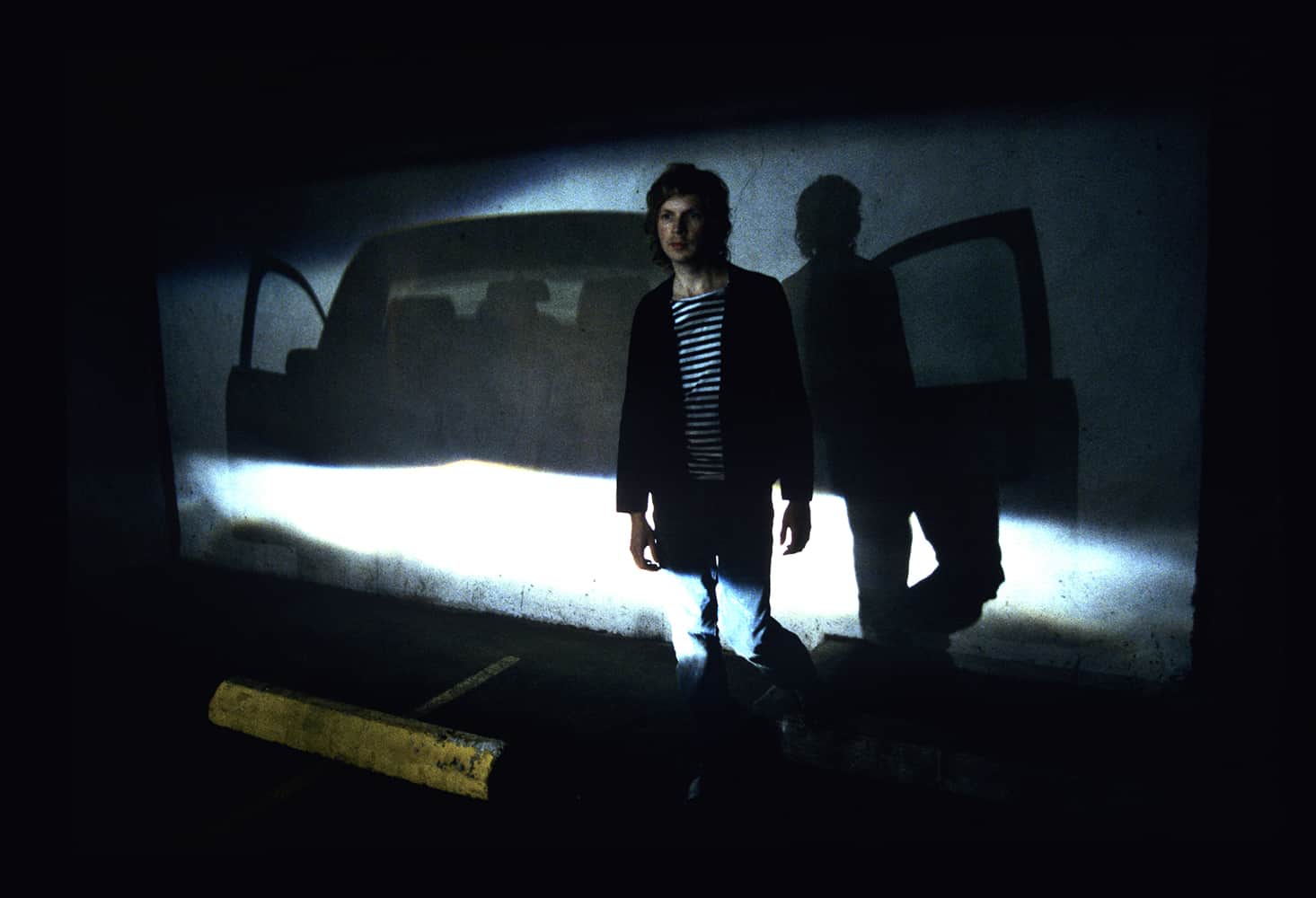
1. Beck – Melanie Pullen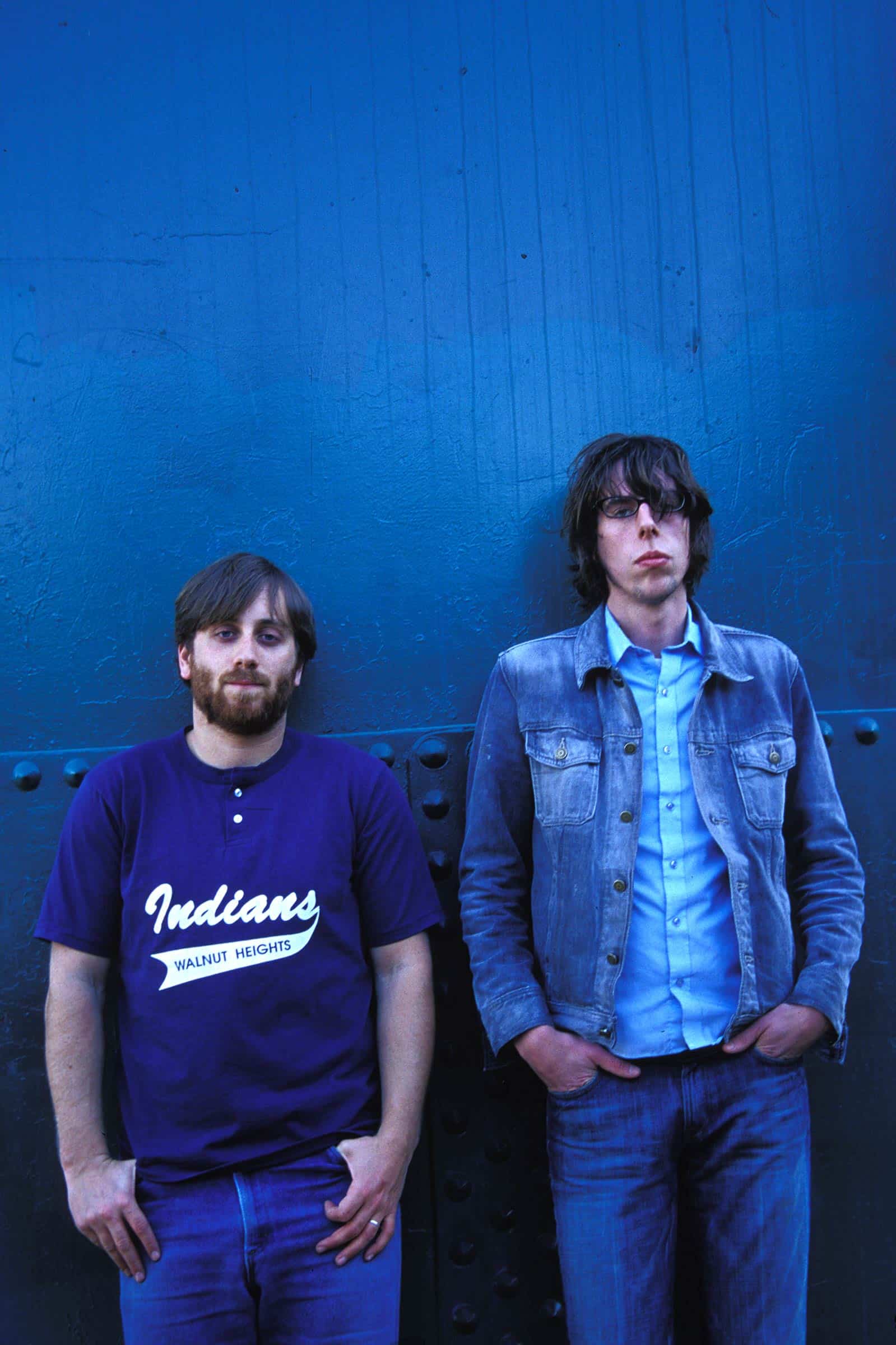
2. Black Keys – Melanie Pullen
Which seems curious to me.
Yeah! That actually is true, I don’t talk about…I did some of the first pictures of The Black Keys, and a lot of Beck albums. I did a whole tour, actually, where the pictures were projected behind him, like a 100-feet tall.
There was a brief mention that you had something to do with his Guero album, but maybe people just focus on the fine art section.
I think that’s been my main focus, too, because that’s really what has consumed my life. These series that I do are all-encompassing.
Sure sure, yeah.
I gave up all the other stuff, and focused heavily on…I mean, there’s no rules, so I like that. I’m not working for someone.
Right. So you had a successful career before you…
Yeah! No, and it was funny, I shot some of the first pictures of The Black Keys. I did a lot of bands, like The Black Keys up here in the Hollywood Hills, way before they were famous, and then they took off.
And then I did a lot of stuff, a lot of bands, I mean, a whole list of bands. That was really fun. I had a moment with that, though, where I would love the music so much, but then you meet the musicians and it was a real let down.
Oh yeah, sure.
Like, oh god, they’re not as intense as I thought. And then the song was never the same! Like, Game of Thrones is so silly, but I really like that show, I love that show.
I watched it this morning!
It’s so good! But then I purposely not wanted to see the actors in real life, because I know it will totally shatter the illusion.
It’ll change it, at best. And ruin it at worst. When you were doing all the band stuff and the portraits, did you have an eye towards wanting to do fine art?
Yeah, so that was really my goal. I was so young that things were happening really quickly, I was doing all the music stuff, and I was making some money there, and then when I started, I just had a show in my head, it just didn’t even occur to me that it didn’t exist. That’s how being self-taught has worked for me, because I actually see everything so perfectly in my head before I make it, it exists already. So High Fashion Crime Scenes really existed for me, as a completed series, I had the reference photos, and I knew what the whole show was going to look like. I would tell people, “hey, I’m having an art show!” At one point I told my dad, and years later he said, “when you told me you were having this big art show and duh duh duh, I never told you but I was thinking, what the hell are you talking about, what art?” And then I told him, “if you had ever said that, I think it would have shocked me, maybe I wouldn’t have made the show.” It was so real to me that it existed.
How long did it sit in your head before you started to actually work on it?
I came across two books, and one I came across that I really, really shocked me. It was this crime scene book.
But you already had it in your head before the book?
No, it was a book of early crime scene photos that happened to be mixed in with some other books in a bookstore, and I opened it and thought, “what the hell is this?” Suddenly, your first moment with mortality, and these horrific crimes, it haunted me for a long time. And then years later, I came across another book that was much worse, like, the worst crime scene book. The same store, everything, I guess they had some section on death and the dark side of everything…but I’m looking through it, and at that time I was oblivious and looking at the shoes, the crime scene photos, like “woah, look at that wallpaper” and then on my drive home, I thought to myself, “hey, I was looking at crime scenes but didn’t notice the death. How is it I was there exactly a year ago, and then the second time oblivious to this violence?” And then that became an interesting door into myself, a window into what had changed for me, and I started really analyzing it.
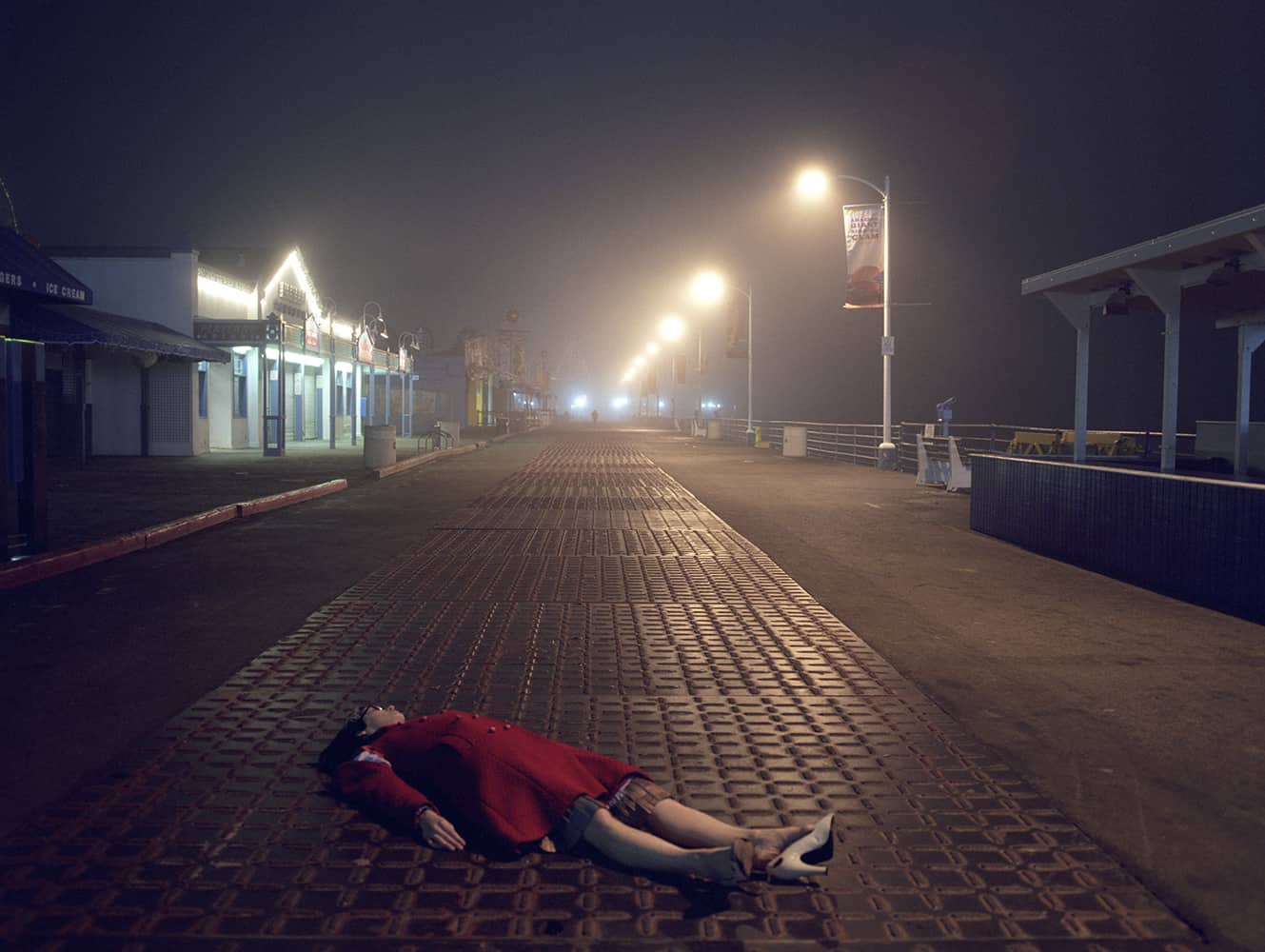
From High Fashion Crime Scenes, 2003-2016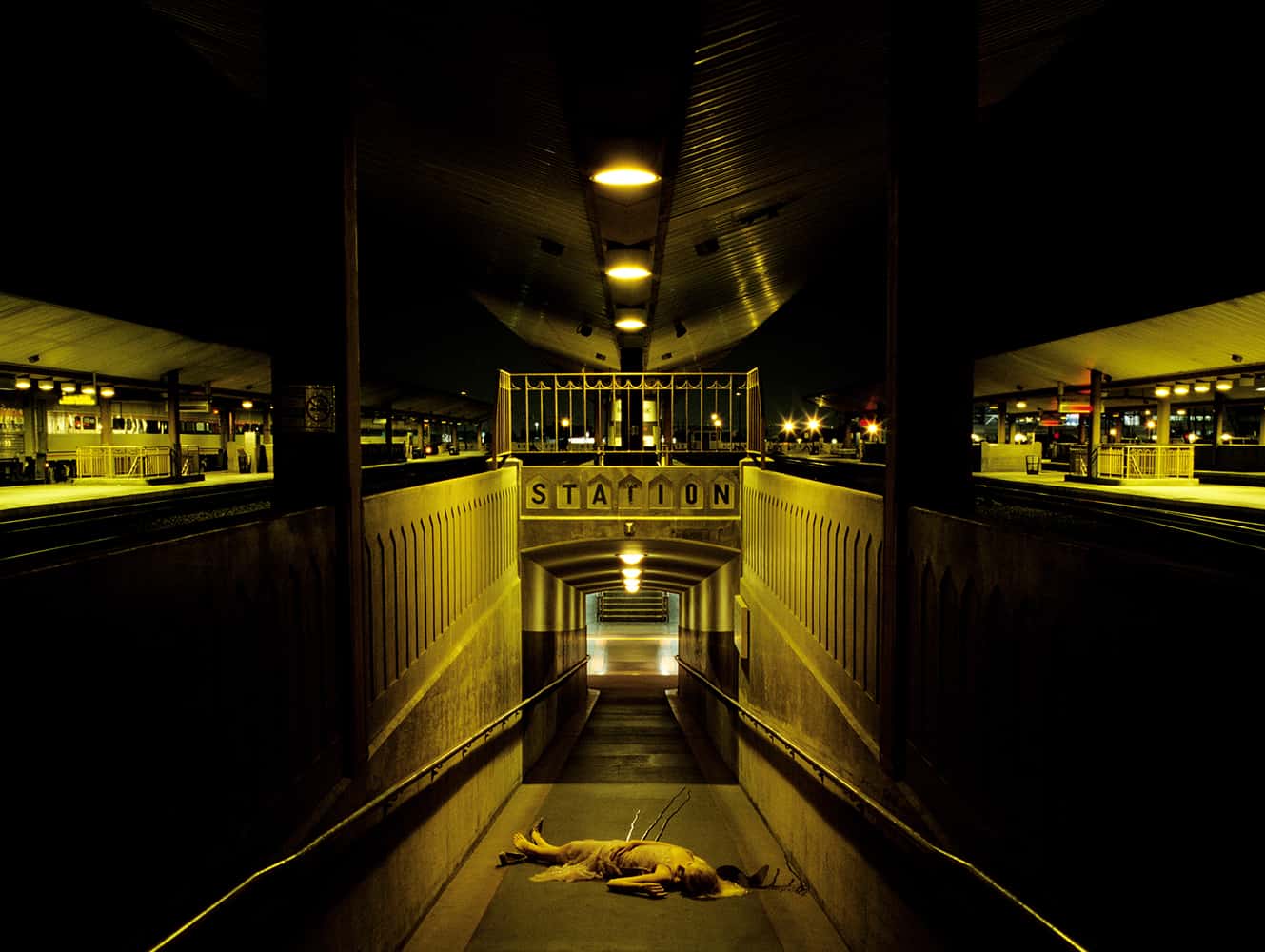
What had changed for you?
You know, I think it was around the time, Pulp Fiction came out…
1994.
Yeah, that time period, things were getting more and more violent and glamorized. There’s this subtlety in how violence enters society; fifteen years ago, The Walking Dead would have never been on TV.
Sure, sure.
Yeah. That’s one of the most violent shows ever. So at that time, violence was subtly coming in, and the news has always been glamorously…
Making its way to the more violent.
Yeah, to The Walking Dead. So I think that, somehow, I was desensitized, based on probably my taste in film, whatever it was. And then I started to look at how are we getting into this cat and mouse game between distractions that makes you desensitized, the news will be super violent, but then they always go to this happy story. Or they will cut to an Herbal Essence commercial…
Right, a commercial that is totally in opposition.
Oh yeah, totally! So the High Fashion Crime Scenes became a play on commerce and distractions versus this violence that’s real.
And you were working on that while you’re working commercially?
No, so I just stopped, fully. I did do the Beck album stuff in the middle, because my headspace got…during that series, I really delve in, I get almost like a writer when I start a series. It doesn’t look like that, because it’s very Pop-like, but that’s all purposely done. For me, it was delving into real crime scene photography and spending a lot of time in Mexico City in the black markets, doing some other stuff.
Was that around the same time that you went to Tepito, Mexico?
Yeah! The idea was around for a long time, but I was collecting these crime scene photos for a long time, and researching…things were evolving over time. And then I really started shooting in 2002, I think?
Why did you feel that you were ready at that point?
Well, hahaha, I have had a strange phenomenon where I always have an art show planned before I have the art, so I got an art show, I told somebody that I was doing this, without any art!
That’s an excellent way to create a deadline for yourself!
Yeah! Its always been that way, I don’t even know how to think any other way. I had this idea, and then I got this amazing space in Silverlake, and was just given this massive art show, in kind of an informal space, and then from there, I did that show, and then the LACMA started doing some stuff with me, and then I signed with Ace Gallery.
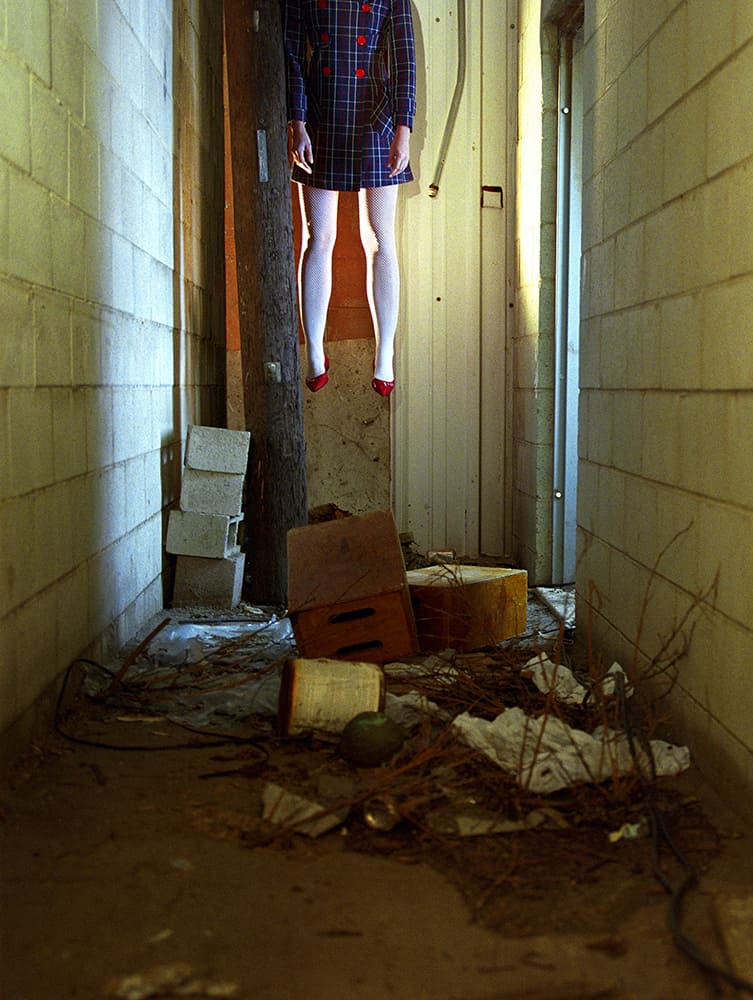

Aha.
It happened all really quickly, and then again, I got an art show and I didn’t have the art. Ace said, “do this solo show!” and I was like, “oh yeah, done.” And then I was creating it. So it was all in my head, but until I had the deadline and the reason…I have a series, a few series in my head right now, and I’ll almost start them, but then I’m realize, I don’t have a show planned for them, so it’s…
There’s no reason to do it now.
Yeah! why would I start it, it almost seems like, what’s the point? Hahahaha!
Hahahaha!
I mean, I do have shows that I’m working on, I have exhibitions coming up.
Other than the ideas you have in your head, there’s other stuff that you’re actually making.
I’m doing more of the Crime Scenes, actually. So yeah, I was done with that, and now it’s coming full circle.
Did you feel like there was more to explore, there?
Yeah, and I feel like I’ve grown as a photographer, and there’s just a lot more, yeah. There’s a lot more that I want to do, there’s parts of it that I felt were incomplete.
So, from what I read, you’ve had your three series since…?
Yeah!
And that’s been it?
Yeah! I mean, I guess.
Not as if that’s not enough!
Yeah, I’ve done a lot of editorial stuff in between.
But you don’t publicize any of it?
Nothing!
It doesn’t seem as though…your career really took off before the internet was a thing, and it seems to be continuing just fine without any real interaction with it, publicizing through your website or anything.
Yeah, yeah. And I did the LA…I don’t know if you know when I did the LA Art Show, were you there?
No.
I did those really big performance art…
I actually wanted to ask you about that, because that’s something that I’ve thought about, it seems like a very unexplored space for photographers.
I’m doing a lot more of that, actually.
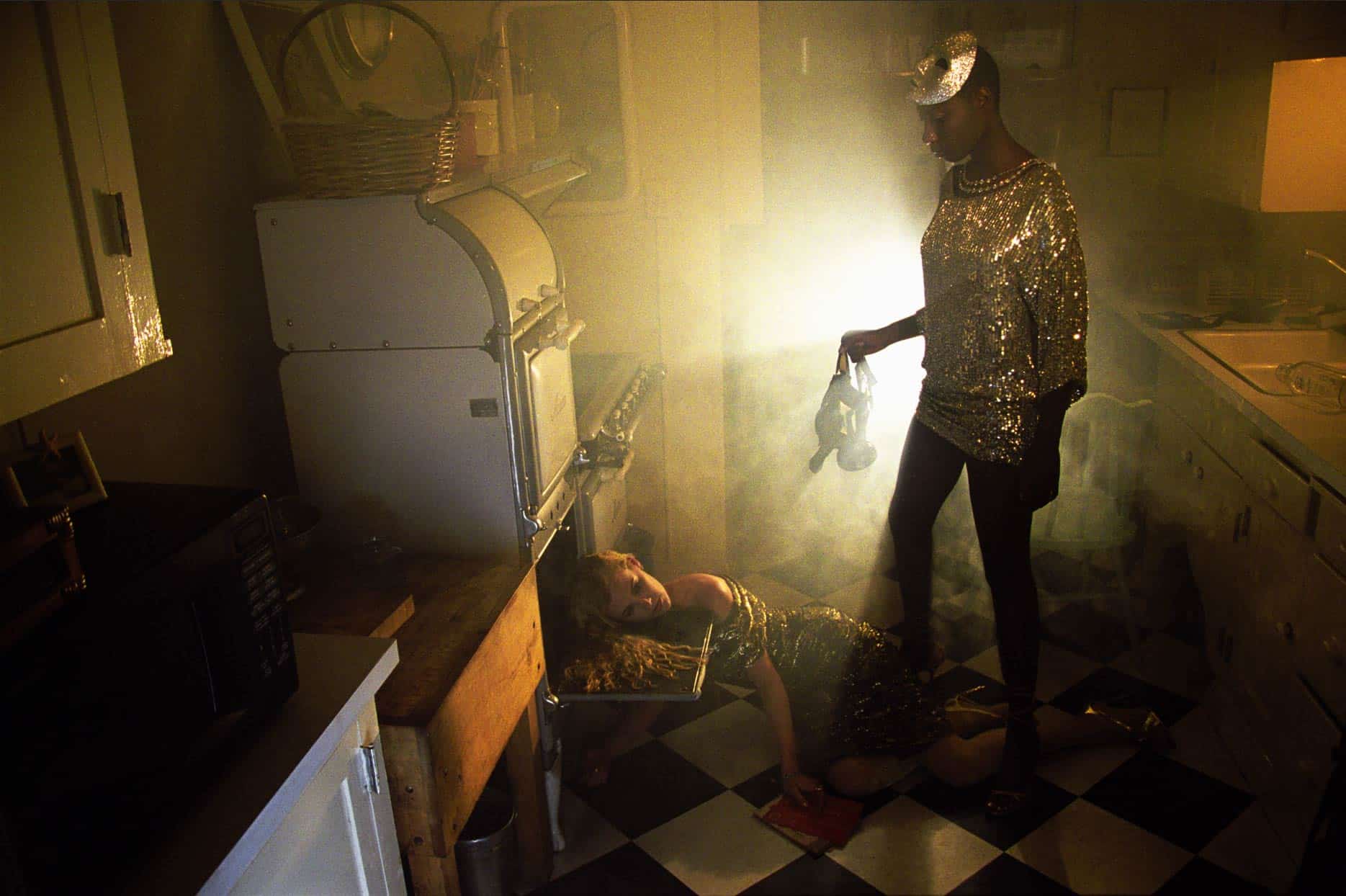
Editorial work for Flaunt Magazine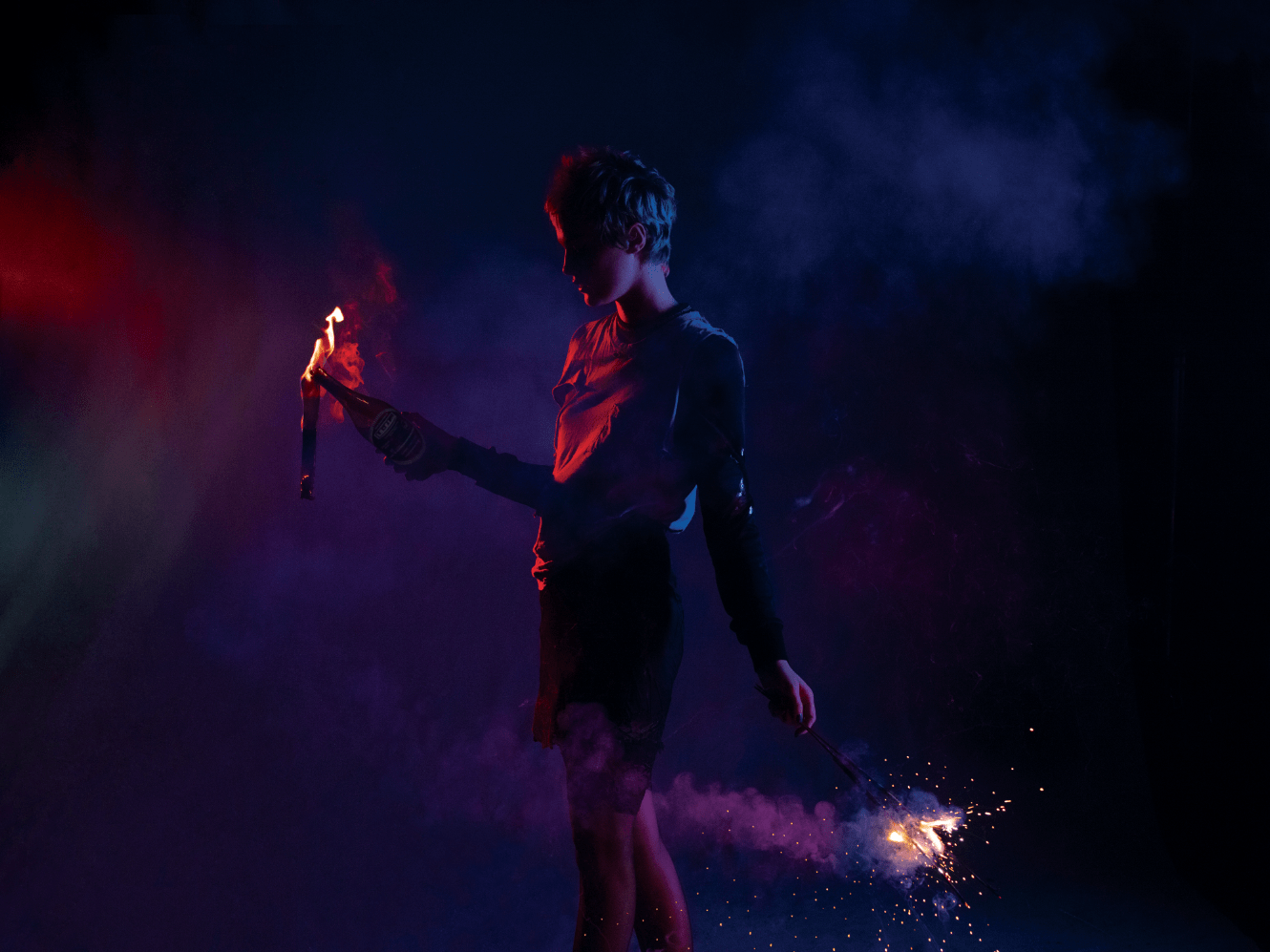
How did you get into that?
They just came to me, and said, “here’s a bunch of money, and do performance art.”
That seems horrible, I’m so sorry you had to go through that!
Hahaha! The problem with me is, if anybody ever gives me money, I spend all of it, and more, so…
But you make it.
But I made it. So what happened was, I did all these murder scenes, and it was nuts, you have no idea. I did these murder scenes; the first night was just hangings, so I hung my models, live, and people were just, there was a huge crowd of people. And then the next night…
How long was the performance?
Well it was just all night, I would do these models and…
Just keep shooting.
Yeah, I was shooting, and then I started doing more video. And I was DJing this 80’s, really campy, terrible 80’s music, corny. And then I was blasting these smoke machines…whenever I do stuff, for some reason, I have this side of me that’s thinking, “at what point am I going to be kicked out?” Because I love getting kicked out of places, I have a whole side of me that goes back to my teen years of being a door-to-door salesperson, I invented a job where I would get kicked out of places. And then I became fascinated by the psychology of “at what point is it not okay to be here?” zsnd then the way people’s interaction changes with you when they’re trying to say something’s not cool or okay.
Because it’s a confrontation that nobody wants to be in.
Right! But I’m so fascinated by it. Why is that going too far?
How did you get a taste for that?
I was a door-to-door salesman!
So you really were…
As a little kid, yeah! As a teenager, I invented a job, I made a lot of money.
What were you selling?
I would make jewelry, and I would go sell jewelry, it was ridiculous. But yeah, I would make a lot of money, and then I would be thrown out. So I never cared because I was making so much money, and then somebody would come along and say, “there’s no soliciting in the middle of a BMW dealership!!” Hahahahaha!
Hahaha!
Or I’d walk on the studio lots, at Christmas time, and they’d give me a conference room in Universal Studios, or whatever, and I would be selling jewelry to everybody! And then eventually, a security guard would come in ask, “how are you selling jewelry in here!?” It was just weird, this kid…
But you enjoyed it. You enjoyed that aspect of it.
Yeah, it became really interesting!
The transgression.
Yeah! And it’s kind of like that syndrome of the Bouncer, the Tough Guy; suddenly he’s a bouncer, so he’s like (grunty noise) and you’re thinking, “why are you like that there, but you could be sitting here drinking a coffee and be cool?” So there’s some weird psychology. So anyhow, it always falls into my work: at what point is my work going to really disturb somebody, and why? Or why are certain people disturbed by certain things versus others? It’s interesting. I just find all the different reactions fascinating.
That’s awesome, yeah.
Yeah, and really, it’s just chemicals on a piece of paper, and doesn’t even make much sense. It’s a stagnant thing, at a certain level for certain people can become very disturbing. But other people, because there’s reflective glass on my crime scenes prints, they’ll do their lipstick in it.
They got none of the provocative aspects of the photos.
Yeah! And it goes back to those days of the one guy that decides to throw you out.
Who gets needled by it.
Yeah, it disturbs something in themselves, there’s something that exists as a rule, or a past experience…
Oh yeah, totally. Do you watch people as they’re engaging with your photos?
Yeah. That’s the great thing about being an artist, nobody knows who you are, so I love to listen, I just listen to everything. And the people that hate my work, are the ones that come back the most.
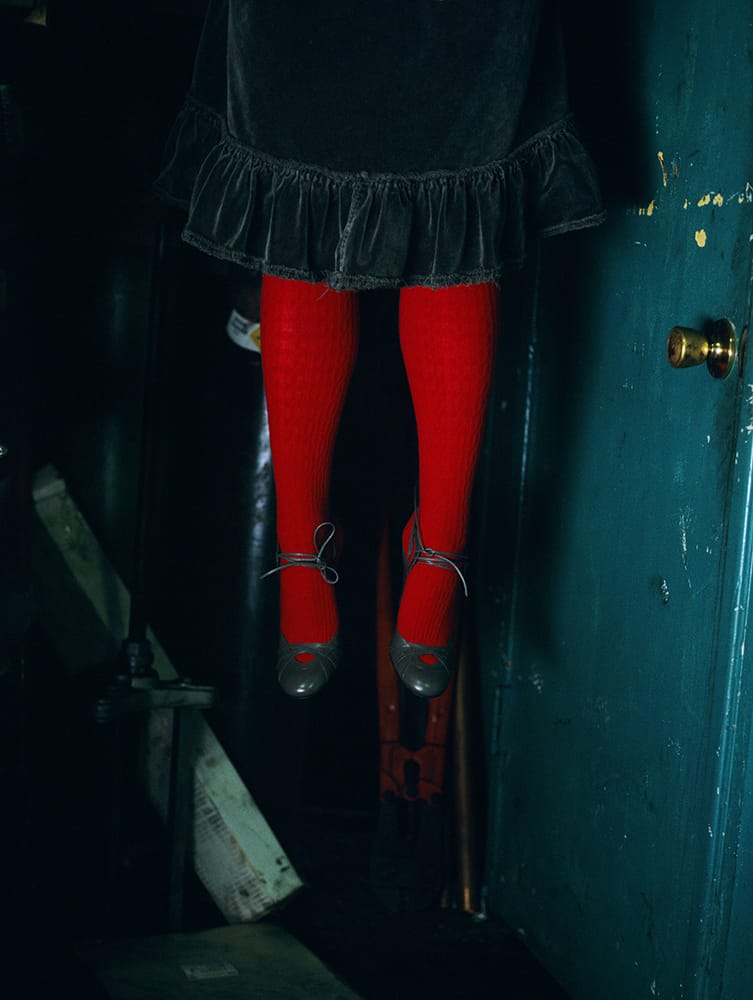

From High Fashion Crime Scenes, 2003-2016
Really?
Yeah, they’re the ones that will write me, or come to my shows twelve times and sit there all day.
That’s wild.
It’s really interesting. So the LA Art Show was really fun, because I had been toying around with the idea of doing performance art, and my stuff is very performative…
There’s definitely a cinematic, theatrical element to it.
Yeah, so I wanted to bring the theater to it, my gallery knew I’d been wanting to do performance stuff, so they kind of arranged it with them. They gave me this space, a double-sized booth, which is pretty huge. The corner right across from me was this gallery from China showing all this work…by the second day, the crowds were so enormous, smoke’s billowing out of my booth, there’s the music blasting, the crowds are getting bigger and bigger.
Then we got the number one pick in the LA Times for the performance. By the end, they knocked over the wall of the Chinese booth…it was so insane. But I couldn’t control it. And the models went crazy, I had the blood coming out and the guts and stuff, it was only supposed to be one model at a time, but this other model got kind of competitive, and it turned into this weird necrophilic…I was just sitting there in shock.
It’s like Jurassic Park, where these create these dinosaurs, all the sudden, the dinosaurs end up eating people.
Yeah, that’s what it was! And then I thought, “this is wrong on a level I didn’t even think imaginable.”
It got out of hand.
It just took on a world of its own, and I was just laughing, because this is what it’s all about for me, this is great. So I’m doing a lot more performance art pieces!
What kind of performative aspects did you employ, did you just have them posing for the photo? Or did you have them acting?
So I would play the music, and then they would, they had these axes, and they could chop up the bodies…
Oh, they would simulate the chopping up!
I had special effects people build an entire body on a picnic bench, the body and the head, there was a real girl with her arms and head in there. My guys are incredible, they spent a month making it. The thing that comes down, the picnic blanket, so you wouldn’t see her legs, it stopped, it was so perfect, and the smoke would come up from underneath, so people were…
So you were simulating a murder scene, people getting fake-murdered?
Oh, and real axes! It was a little dangerous.
It’s just a fake body.
But a real girl in it! So she got a little cut…the models were, she got freaked out.
Everybody signs releases, it’s cool.
I know, I said, “you guys are signing this, literally this is the real deal. Read it, because these are real axes.” So they were performing to the music, I would start with that song, Spirit in the Sky!
Oh yeah, yeah! That’s good, good choice.
Really funny. And then these girls would come out and start up…I got my friend who’s a burlesque dancer, and then this other girl, randomly, I cast her as a model, but she somehow got into competition with the burlesque dancer1 So it got…yeah, it was, hahahaha, it was totally a performance.
Yeah, that’s fantastic. I’ve tried to come up with how to make a photo shoot a performative experience.
Yeah, well, it wasn’t really a photo shoot, it was and it wasn’t, you know? It was more…I was shooting it more just because, but it was its own thing.
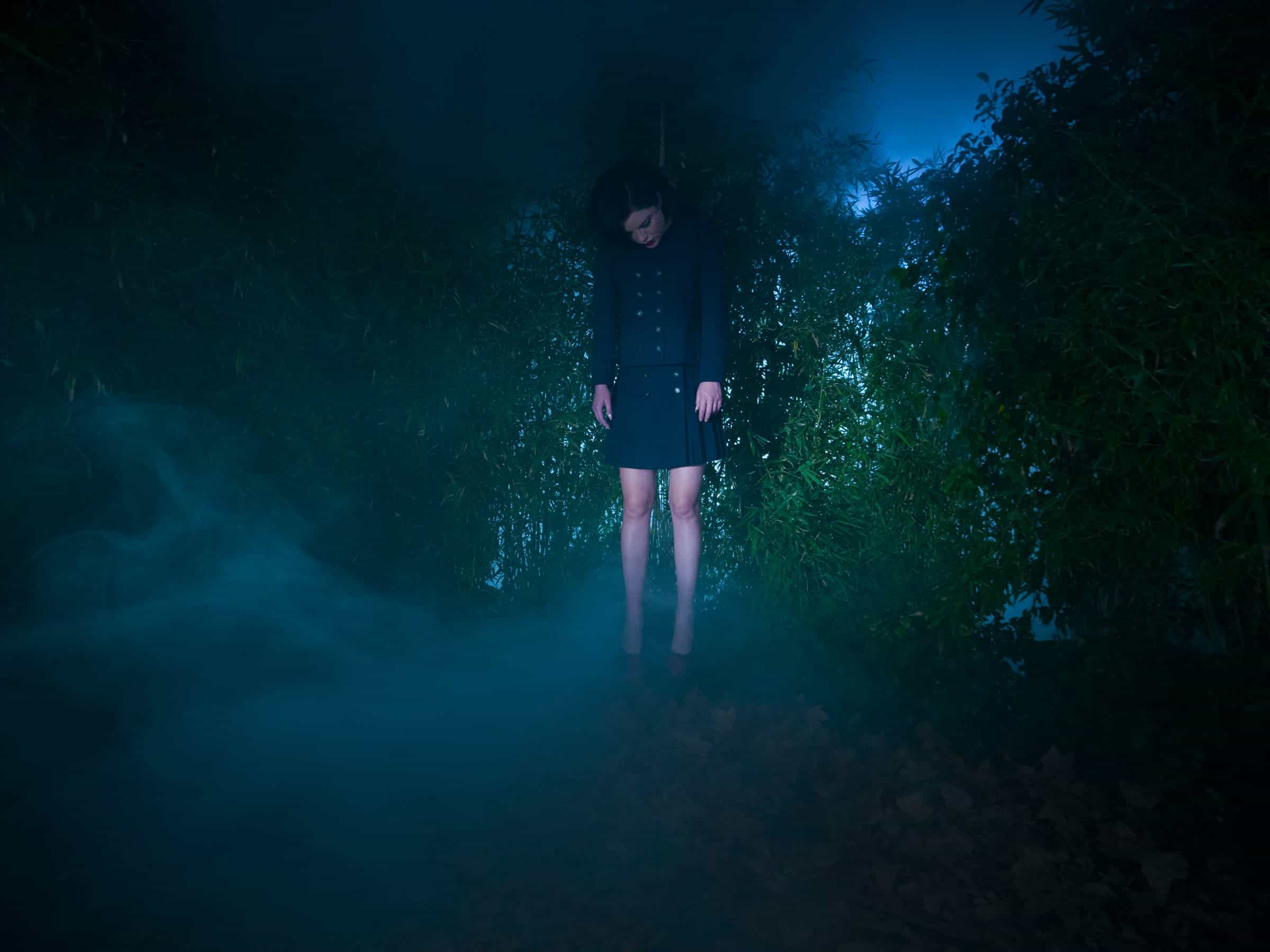
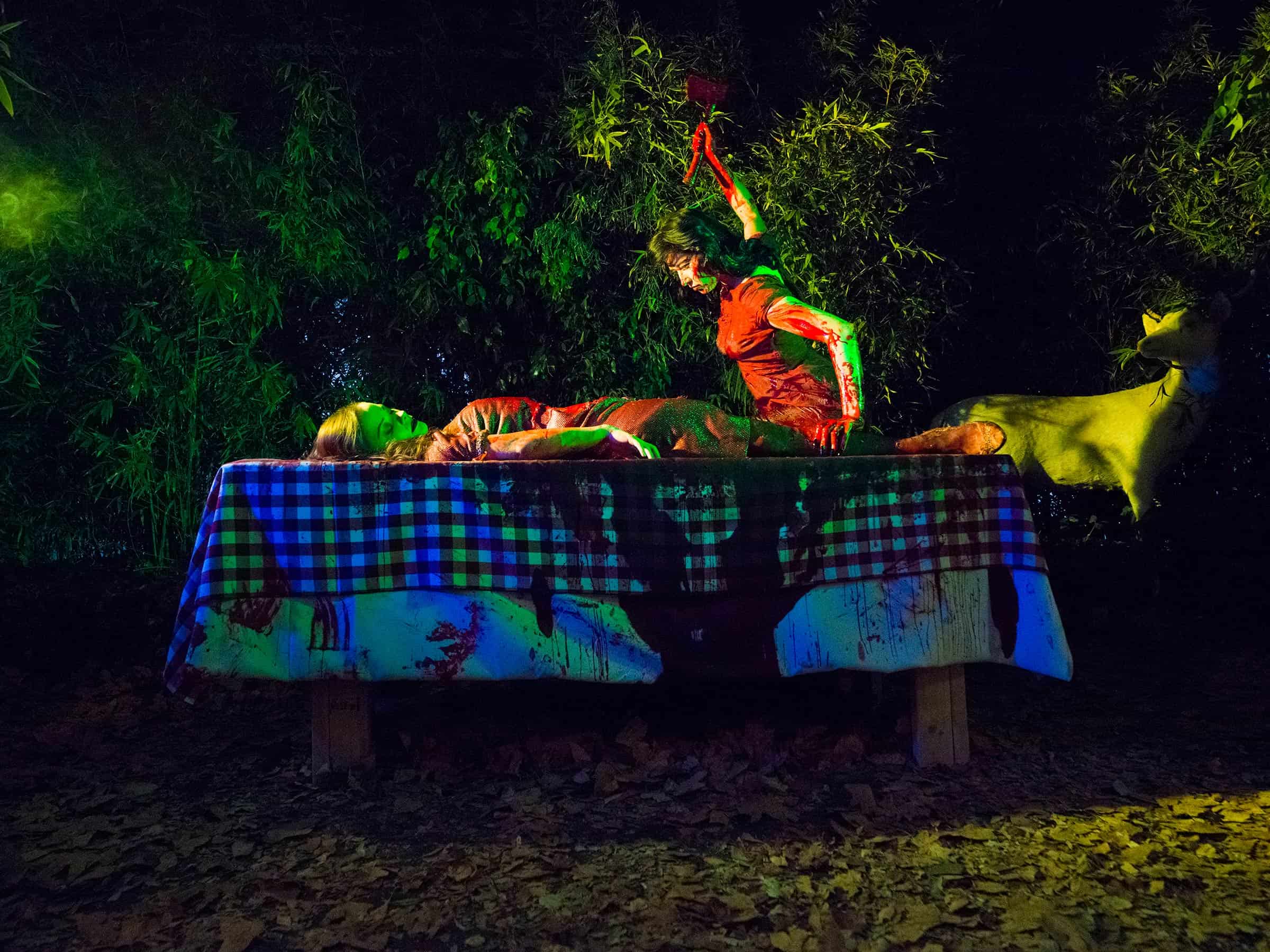
Stills from Melanie Pullen's performance at the 2016 LA Art Show
It was primarily a performance.
Yeah, and then I realized “oh, I should be recording it,” I didn’t have a video camera, I had to borrow one, and then for a few days, I was recording, I figured I could piece it all together. I still haven’t even downloaded it. But I think with my next show, I’m planning on doing these secret performances all over, and then I’m working with a guy to do a weird take on this Paris opera…we’re trying to figure out where to do that. It was fun, really fun.
And it seems like it was really more about the performance the documentation was kind of an afterthought.
Yeah, and I did it, and I didn’t know that I could do it. For me, I’m always trying to figure out what the rules are, it’s always learning there are no rules. So do whatever you want. It’s more about, as an artist, you just title it as what it is. I could have said, this is a photo shoot, then it would be a photo shoot. But since it was performance art, that’s what that is.
And that’s how people would perceive it. If you put an editorial series up on the wall, now it’s a fine art series.
Yeah, and you make it huge, exactly. That’s art, and the people recognize it as that. But yeah, since it’s weird, it’s so much about these weird labels.
People have been taught to see things a certain way.
Yeah, and they believe you. I learned that with the Crime Scenes, I realized people wouldn’t like it, I didn’t think I would get very good art reviews on that, just because I didn’t really know what I was doing.
HA!
So then I thought, “okay, I’m going to go for more press write-ups, more stories, features.”
Like the Times, so on.
Yeah, so I got all that, but I knew I was shaping what people would think that way, so by the time I got good and some bad reviews, it didn’t matter.
You had already shaped your own story.
Yeah, you can shape it, and people knew, and it gives you a little bit more power over it. It’s interesting, I started getting better, I’ve had a lot of good reviews, but I’ve had some bad ones, and I started getting the best ones the less I cared.
Oh sure.
I’m just like, I don’t really give a fuck anymore. I mean, I really think I’ve hit this point where I don’t know if it’s my age, or my midlife crisis or whatever, but I just don’t care, anymore.
If things are going well, who cares what that person thought. You hated my work? Well, I’m sorry you didn’t have a good time, but, I did.
Hahaha! I’m always thinking, “you hate my work, why?”
Yeah, sure.
“What was the worst part for you so I can make it worse next time?” Hahaha!
Yeah, I feel like bad reviews would make you happier.
Some of them do, definitely! Yeah, and the Soda Pop series that I did, but it was my secret, I didn’t promote that at all. I’m actually surprised that you…
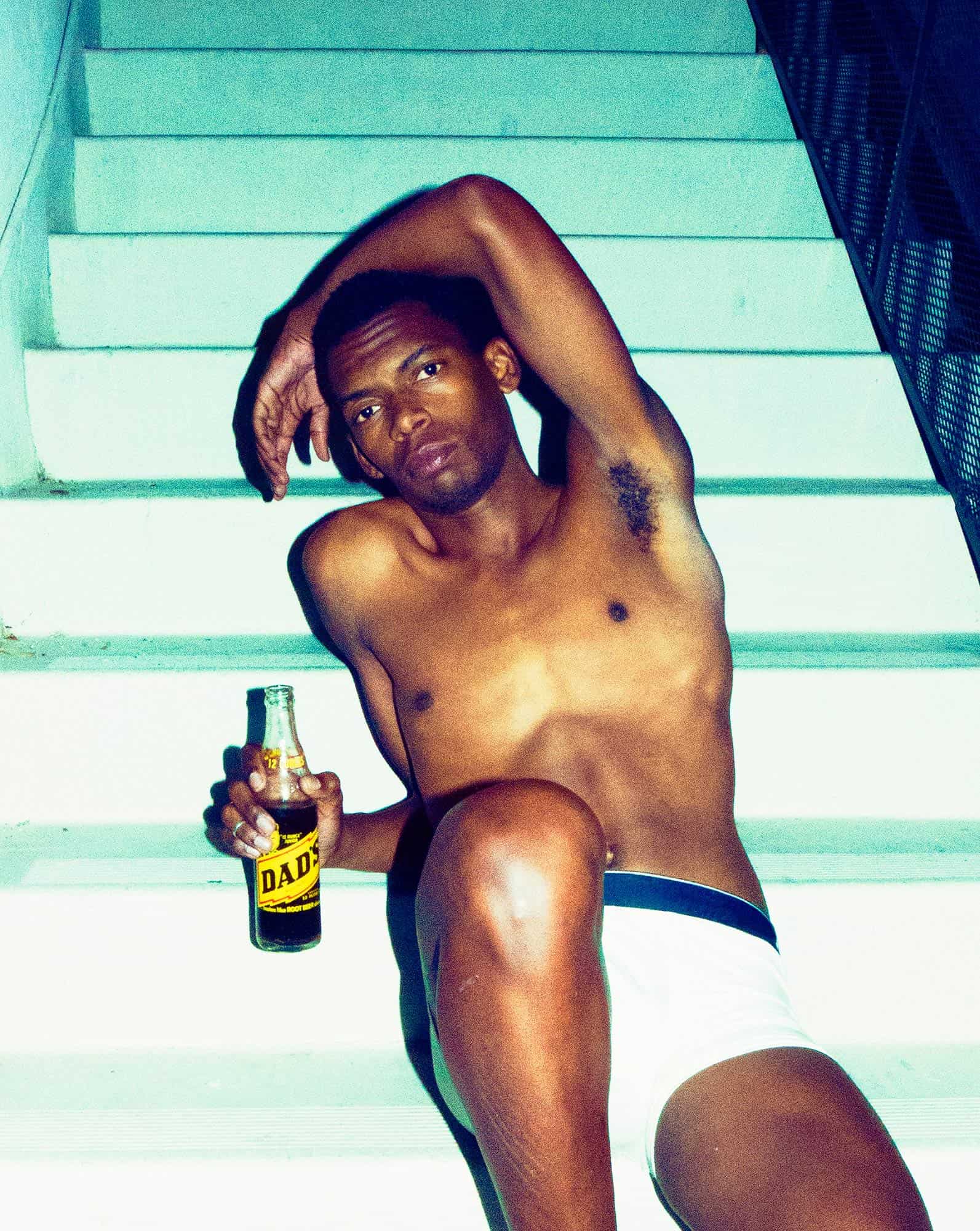

From SODA POP!, 2016
This is my craft!
I know! I thought that one was hard to find! You did well on that. It was more of an autobiographical piece for me, and very selective, I was showing it there, that’s it, it’s not meant for LA or anywhere else.
Why not?
It was a very personal series, I don’t usually shoot like that. It’s very outside of the theatrical…I don’t think I will ever shoot like that again. That’s a weird thing to say about that series, but it kind of tells a story about my childhood.
How so?
When I was maybe eight years old, I have always fought with insomnia, I’m a night person, that’s really what it comes down to it, is I like the night, most of my shooting happens at night. But I have to wake up early, especially with a kid, so there was this full circle of insomnia…so as a kid, as I was eight in the Village, my parents would go to sleep, and I my bedroom was on the second, we had a townhouse right off Christopher Street, and Christopher Street is amazing. It’s wonderful and crazy, but I grew up in the heart of 1980’s madness, the pier was at the end, people were dying every night there, that was where the S&M guys went to, and then AIDS hit that street, everything was happening around that street. We had the first floor and the second floor, and the second floor was my bedroom, and I had this view right there, and this six-foot-five black man would show up at, my parents would put me to sleep, and I would never sleep, I would just stare out my window, and have it open, sometimes talk to people outside the window. My parents never knew, they thought I would go to sleep, but I would just get up and sit there.
It’s all becoming clear now.
Yeah! So this guy would show up, and he’d jump in these gold Speedos, and heels on top of it, monster heels, and no shirt, and a bleach blond wig that had not been brushed, ever, probably, and would flip it on and stand on the corner all night long. And we would talk, he became my friend, he was my secret friend. And he would tell me, “I turn tricks for $20,” I’m learning everything, like, “oh wow, this is amazing and you’re my friend.” So I had this whole secret, it’s also kind of why the series is interesting as a secret series.
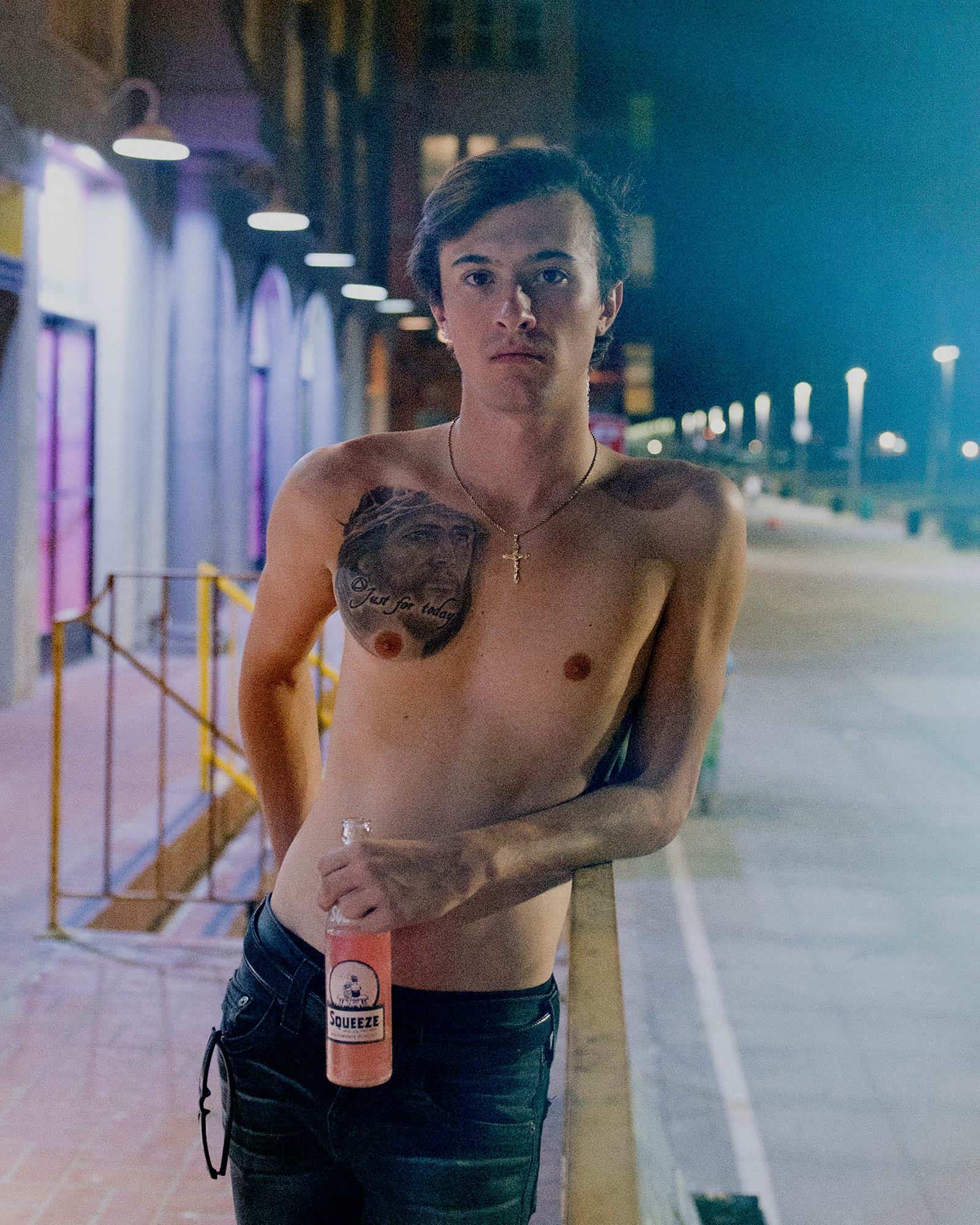

From SODA POP!, 2016
It reflects its inspiration.
It all does, yeah! So it became this whole moment in my life that was so important, that nobody knew about, and it was wrong, and me just being so curious, like when is this guy, and these creepy guys, and some of it was scary.
But you were always safe.
Yeah, I was safe, I mean…my family’s nuts. I’m lucky to probably be alive, my family, meaning they were very young when they had me. So that moment was really interesting. And then when I had my son, I always wanted to go out and shoot and do things, and at night I was up a lot, because you can’t…do you have kids?
Nope!
Oh, you can’t go anywhere when you have a kid.
That’s why I don’t!
Yeah, you are stuck at home, and I’m divorced, so I’m just there with my kid. So when he was younger, when he was really little, you’re just stuck. I started playing this video game, I started playing it with him, but then he would go to sleep and I was so addicted to it…
What game was it?
Candy Crush Soda Saga? The stupidest…
Oh yeah, that’s like crack.
It’s like crack!! Addicting! And it’s so oddly sexual, the way the guy says “delicious.”
Oh yeah, it’s a masterpiece.
It was a masterpiece! So this was amazing, this game, and so I started to realize now, again, going back to childhood with my child, I have insomnia again, and this time I’m having this time with this weird video game, so then I started researching soda bottles. I was thinking, there’s something phallic about this game, and the sexual undertones, so I started researching the history of soda bottles.
Very phallic.
Dad’s, and Chocolat, and all these crazy weird soda names, I started collecting these collectible soda bottles. If you start thinking of it that way, they can have really weird connotations. Then I got a babysitter to come, and I thought, “I’m going to do this series.” So I’m going out at night, with my bike, with my crazy Hassleblad and my bodyguard, a camera assistant/tough guy to go with me, and we would go to really weird neighborhoods where we’d find male prostitutes and stuff. I’d have these bottles that would tell a little story about the person, and they were allowed to choose one.
Which one appeals to them.
Which one has some significance in their life, or indicates something. A lot of them chose Dad’s, which is really strange. Some were humorous, but they, they had to take their shirt off, I gave them $20, so it referenced the guy outside my window.
Did you ever find out his name?
Oh, never. No. Maybe he told me, I’m sure it was Divine or something, something crazy. But then it became…there was a whole dialogue, and some of the guys I don’t think were prostitutes, I shot one guy that was…I ended up using him as a model later in an editorial, he’s really handsome, but he was in jail for robbing a bank, he was a bank robber.
Oh wow, that’s not a common job.
Not a common job! And he got out, and was a recovering drug addict, and I got him walking around outside of rehab. Just what that series became about was,shooting between one and three in the morning, the hours that went back to my childhood, and then the dialogue between me and the subject. And the story in San Francisco was the entire dialogue, a summary of my dialogue, like the bank robber…
Under each one?
Yeah. a story about each person. I always feel like those types of series are relevant twenty years in the future, when it shows a time that’s passed.
Yeah. In the present, it’s not as affecting as it will be in twenty years.
Yeah! When those people don’t exist anymore, or they do, but they’re older.
Transformed by age.
Or something’s happened. That’s when it becomes interesting.
Were you aware of that while you were making it? “Okay, I’ll put it out briefly now, and then hold onto it.”
Very much so. I have that with the series in Tepito, Mexico, too.
There’s a real patience to that.
I’ve had offers on some great shows with that series; the more secretive it is, the more people wanted to show it. They’ll say, “we’ll give you a giant check!” But I just am not ready to show that. It’s become more and more interesting because the film I shot it with, I shot the last rolls I had, I had to buy it up all around the world, it was a rare film to begin with, so it was very…
Which film?
It was a high speed slide film. The highest rated one, so, very gritty. When the pictures are bigger, they take on this almost surreal look. The pictures don’t tell the story at all, they’re very…I wanted to do something abstract, in a really beautiful area. I had heard about this church where they were forgiving…
Murderers?
Yeah. But then it evolved, I was down there, and I found out they were doing a lot of this witchcraft, I found these witches in this black market, and I started to get to know them.
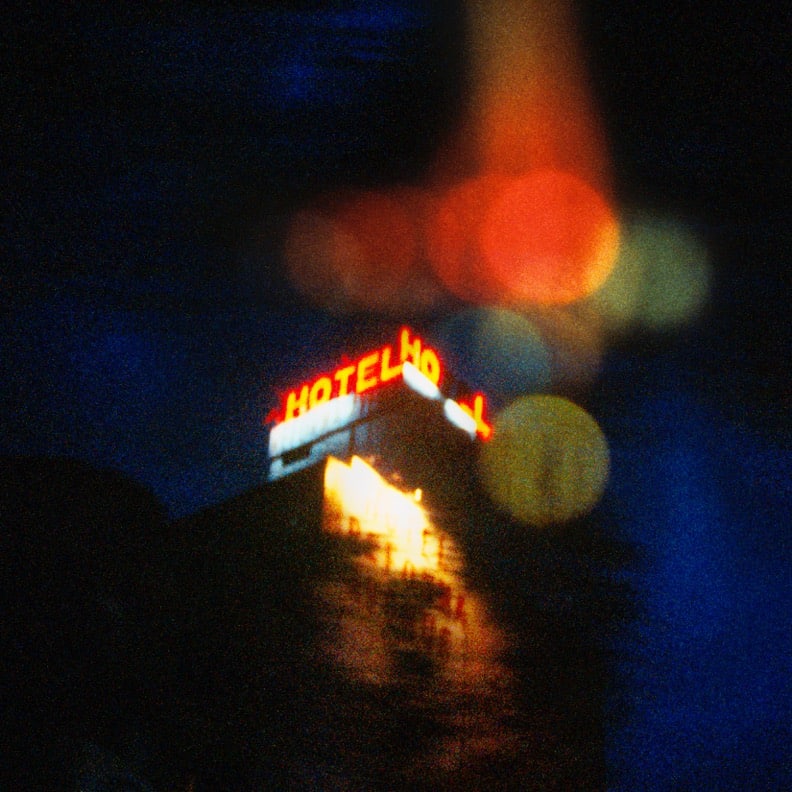

Part of Melanie Pullen's Mexico Series
How long were you there?
I was going back all the time. I was there, for that trip, I think I was there about a week. I got asked to leave Mexico, hahahaha!
You got asked to leave Mexico?
Yeah, I did! I accidentally, when I was in Tapito, got this shot of the biggest drug lord there, and I have a shot of him chasing after the car, trying to grab my camera.
Oh my god.
The next day, I had a guy come to my door and say, “you have to get out of Mexico, you have to leave.” And I booked the next flight out.
And then there was this moment where I was with these brujas, and you know, it’s interesting, the occult and all that, and they were like, they, I asked, “well, don’t people…I’ve heard stories of people grinding up human bones, is that true? Where are the human parts?” So one guy took me to a secret place, and he pulled out a femur, so then I was like, “oh, but is there more, is there a human skull?” Because I wanted to photograph it, I wanted to show it. And then he goes, “well, tomorrow night I have a group of people who are going through graves, and they’re digging up the graves, they’re gravediggers.” And I was said, “oh yeah, I’ll go!”
Grave robbers?
Grave robbers! And then I went back and I was thinking about it, “am I out of my mind, I’m not going, that’s insane!” Like, I’m not going to survive that!
When was this?
2005 or yeah, I just had this moment where I realized, no, this is, that’s too dangerous. There’s a level of danger that’s not quite right on that. I’m going off with people I don’t know.
To a cemetery.
To a cemetery to, they’re robbing graves, with witches!
To watch crime and witchcraft.
It seemed like a set, you have to be so careful in Mexico, and those areas, I’ve always known that. But then later, I was working with New York Times, this journalist who was a good friend, we were going to do a story together in Juarez, that was another one. Yeah, and he said, “we’re going to go down and talk to the handlers and get debriefed.” It was right after I had my son, and I turned him down. I was going the next day, and then I called him, and I said, “you know what, I know Mexico too well, and how safe you have to be, to be so careful, and Juarez is…no.”
It was the murder capital of the world for many years. So you’re usually working on multiple things at once?
Yeah, I really am. I’m starting to realize I have trends in my life, so I have this moment where I do a lot of work and I become a complete recluse. I really just delve into my work. And then I finish a series, and suddenly, there’s all this social stuff happening that’s super-fun, but it has no productive value whatsoever.
Do you feel you have to be productive?
I take breaks, or else my mind gets too cluttered, I have to withdraw a little bit to get the right headspace back. I don’t know if you’ve ever felt…I’ll work 24 hour cycles.
I’m incredibly lazy.
Oh you are? I feel like I am, too, but maybe I’m a manic-depressive in my work, but not in real life.
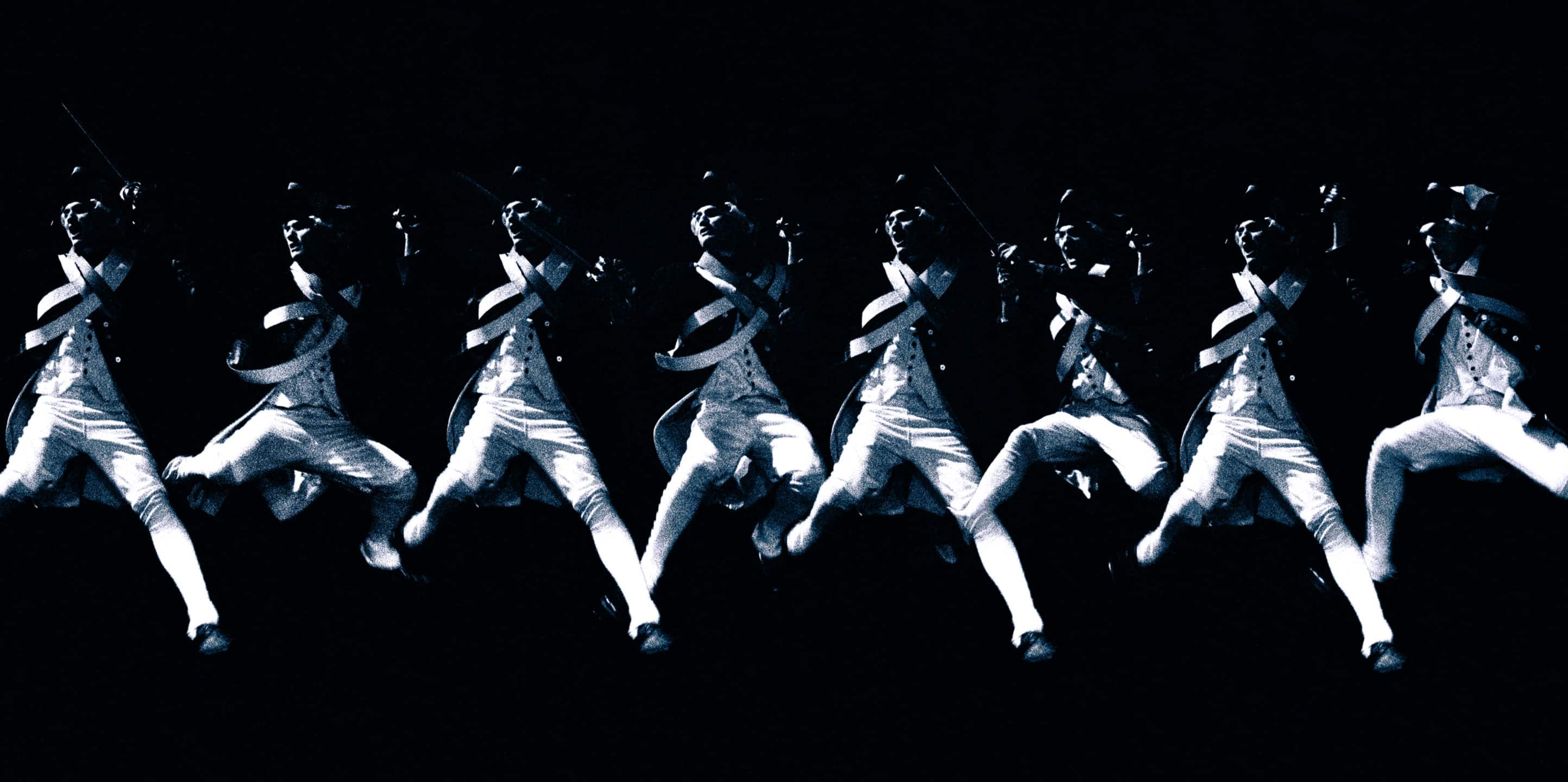
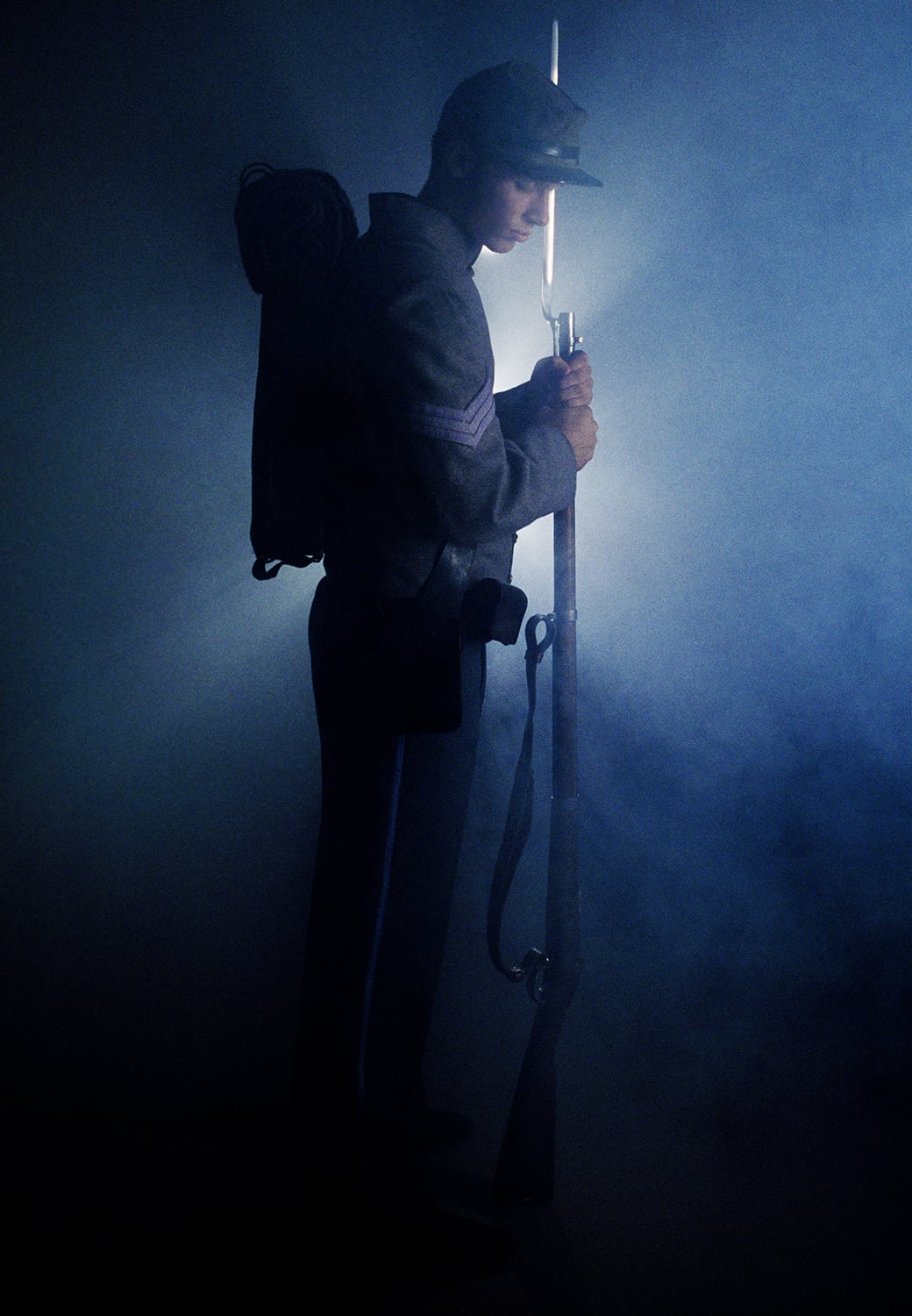

From Violent Times, 2005–2009
You have ebbs and flows of energy.
Yeah, because so much goes into a show, I’m spent. And by the end of it, my mind hits a wall where I just want to watch movies in air conditioning and candy, or go hang out with people and, not have small talk, but just listen.
Do you actively look for things to inspire you? Or do you find that it’s constantly coming in?
Hmm, I think it’s constant. I went through a really rough patch, and you see it show in my career where things slowed down a little, and I think it had to do with having a baby, and doing that, and then I kind of took a break, and then I went through a divorce, so all that kind of happened, my mind was just like “wuhhh.” I don’t know if you’ve been married…
I’ve been through breakups.
It was a taxing year, and by the end of that year I started to really learn, you have to really look at where your focus of energy goes, because you only have so much energy. It’s like that, you worked in an ambulance, it’s what keeps us alive is this little spark, literally.
Yeah, it’s electricity.
Yeah, electricity. And there’s only so much of it in a lifetime, so why use it on bad stuff? I feel like I’m constantly fighting people’s attention spans now with all the weird acts and stuff, everybody’s on these apps.
It’s also interesting that you don’t really…I know you have an Instagram, you have a Facebook, but it doesn’t seem like you’re really tending to them. It seems like your work is outside of social media, which is fascinating.
I think it’s a really amazing outlet for certain things, either you really focus on Instagram, and it becomes an entity in and of itself and you have a million followers, which you could do, I could do that, and put a lot of energy into that. But it’s a very big world you’re going into, and I’d rather have fifty thousand people walk through an art show and be like, this is something they’ve never seen, like, massive prints…
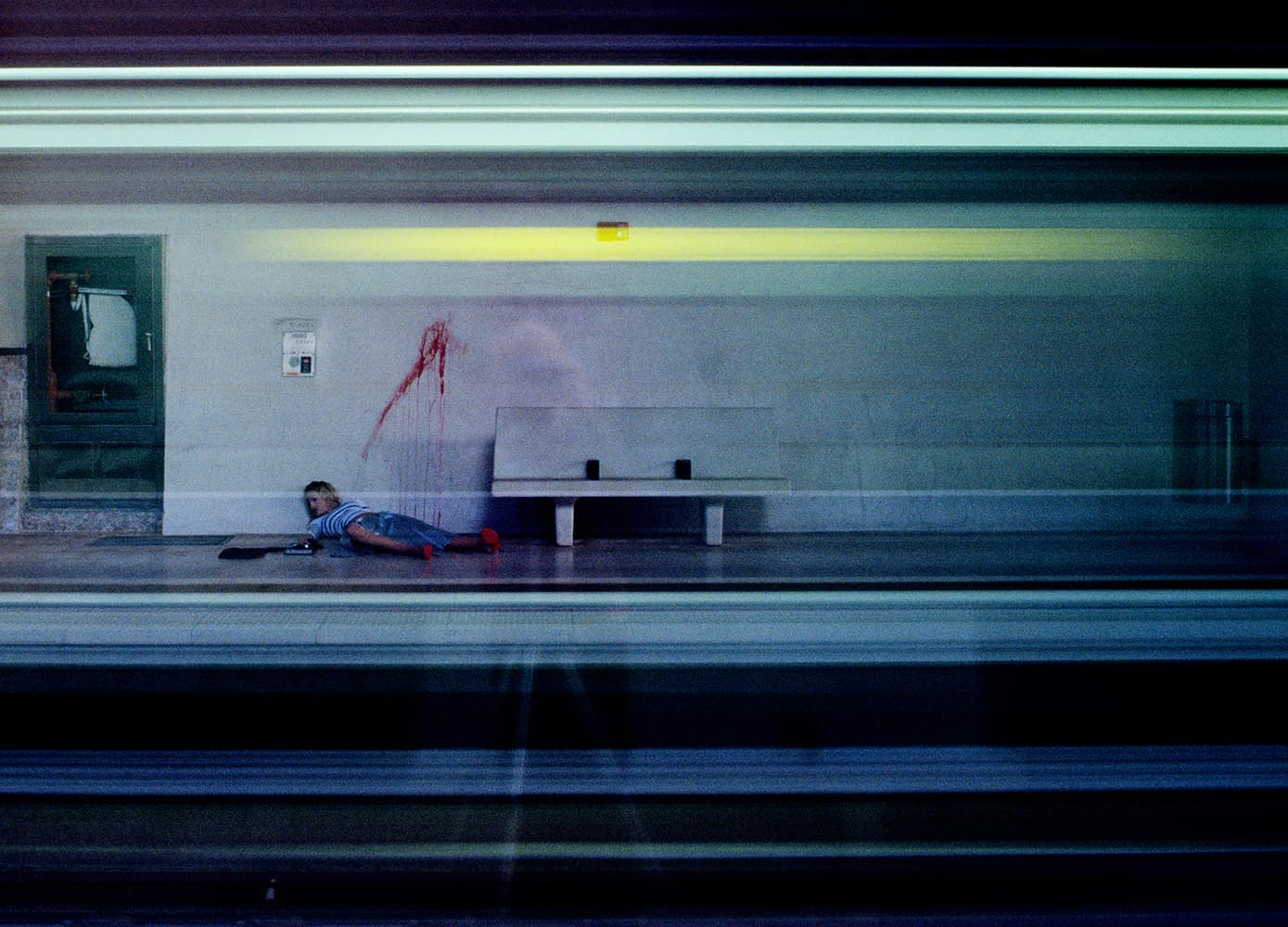
From High Fashion Crime Scenes 2003-2016
And image size is important to you, obviously.
Yeah, it’s all about creating a cinematic experience.
Immersive.
I want to bring people OUT of their phones, and away from that. Maybe at some point I’ll have somebody work on Instagram, and upload stuff, but it’s hard to tell a whole story to someone now because their attention is…, “I’m reading a text, Instagram, I have Tindr, I have a date!”
Sure, people check their phones during meals and…
Jesus Christ. I always try to turn mine over, I have to keep it on me, but I really try not to deal with that, that much. And the energy, that takes up so much energy. It’s weird. So I think focusing energy, and I could be better at it, but that’s how I do it, I do it all at once, so with my next couple of series, I have allotted time to do that.
That’s the other side of so much art being online, is that the art that isn’t online then becomes, much like you were saying, it’s like a secret. Or it makes it more attractive to people.
Yeah, yeah, in a way, right? You have to find it, it’s an experience.
And then you can’t experience it any other way, so now the value of this experience has gone up.
I was thinking more and more about the psychology of Facebook, how it’s morphed into this place that you can only talk about happy things. People get offended if somebody rants, which is my favorite, when somebody breaks down and rants.
Of course it’s your favorite!
I’m like, “yes, they broke!!”
I feel like I understand you perfectly now.
Hahaha!
Oh, this was a question I had, because you had talked about photojournalism, reminded me of something I’d read recently about war photography, about the moral quandary of beautifying death. That to create really good war photography, it has to be beautiful…the paradox of trying to convey the horrors of war through beauty. Is that something that you deal with?
Well yeah, I don’t really understand…I think about it all the time, and I just don’t understand why death is bad. I just don’t understand why, as a society, it seems like a very American thing. Everything dies. It’s part of the cycle. War is nuts, obviously, but it is very much part of human nature, dating back to the beginning of time. We’re very confrontational, as a species. I don’t know why, but it’s part of it. It seems stupid and antiquated, but it’s not. I found the correlation between suicide photos and my references really interesting , and you were a driver in an ambulance, so you probably saw suicides.
Oh yeah.
Yeah, I don’t know, there’s always the suicide where somebody doesn’t dress up for it, but many suicides, they’ll wear their police uniform, they dress in their best outfits, and often times you see this ritual to suicide. It’s knowing you’re going to die. So if you know you’re going to die, and not in a hospital…
You know you’re about to kill yourself.
Yeah, you create a ritual around it that has to do with beauty, or personality, or some people, a large majority, reference a moment. And then war has always been about war makeup, going back to the days of…
Performative.
…like Indians who wear their, what’s it called?
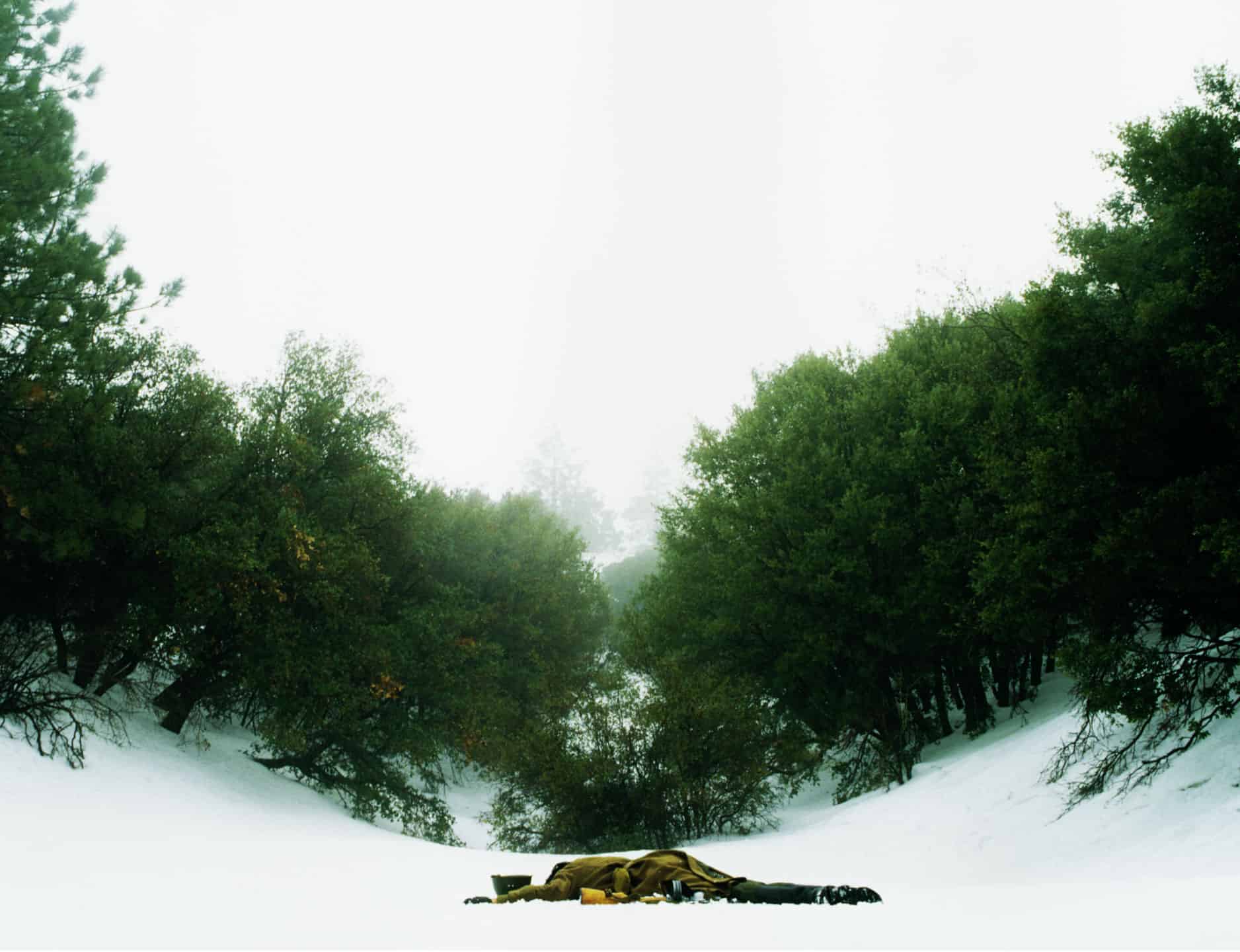
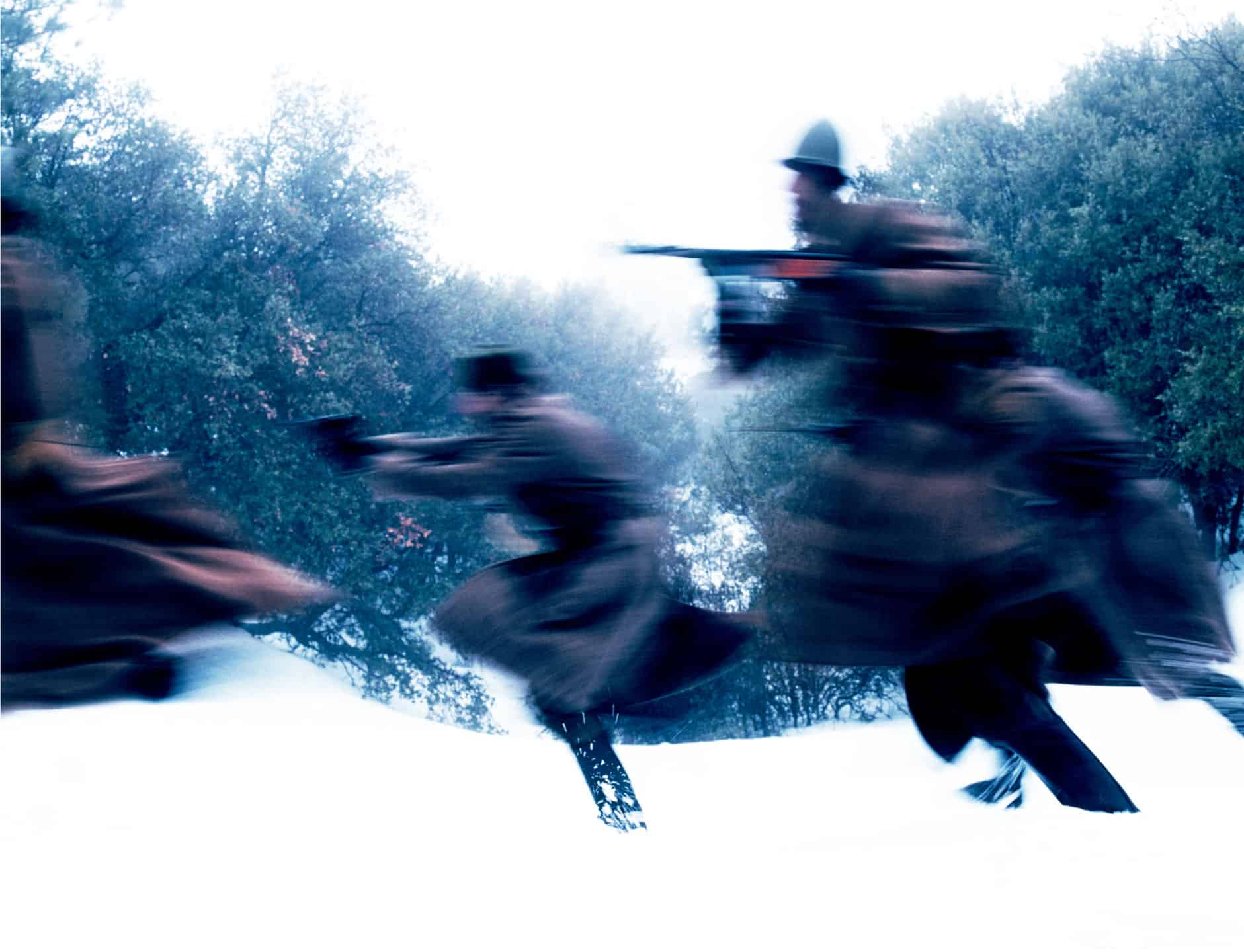
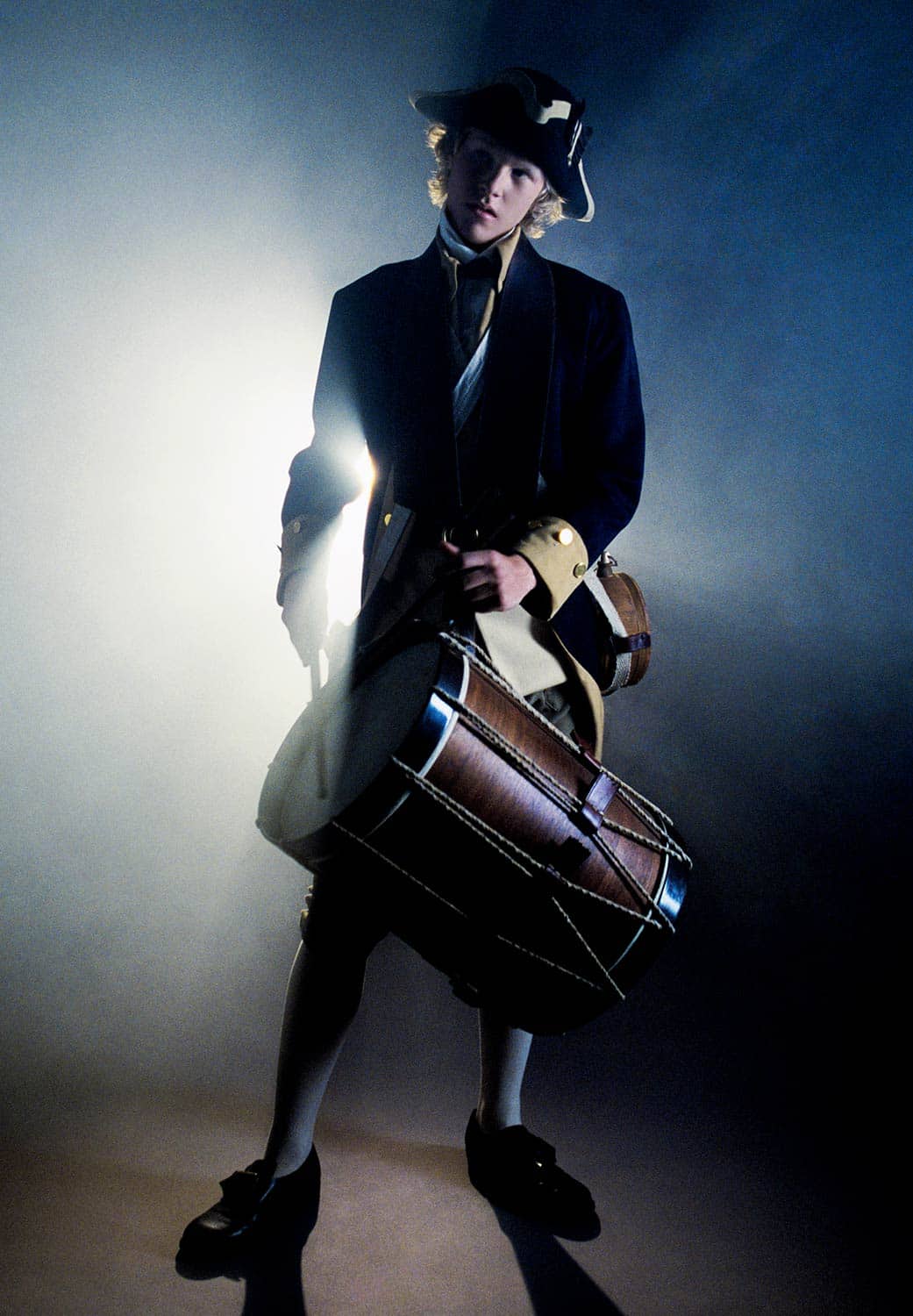

From Violent Times, 2005–2009
War paint?
War paint! Or, you know, the Romans had these fantastic outfits. With Violent Times, I did the history of war, men dress so beautifully to go to die, but there’s a ritual behind beauty and death, how you think you’re going to be remembered in your final moment. It’s something in our nature, and maybe this conscious decision to be…the Egyptians even memorialized death and gold in tombs…
All these fabulous…
Yeah. And even the people that weren’t the pharaohs, they were still building these beautiful caskets.
So it’s definitely something you’re conscious of in your work.
Yeah! And so these war journalists, I think, it is something, when you’re in tune with seeing something, and you’re getting that final moment, we’re all living a story. A movie, or whatever.
A narrative.
And that’s the most important part, in a way, because that’s the end of it. So these guys are capturing something so important, it’s almost beautiful, in a way, because it defines this whole moment. Some of those photos, they’ve changed wars, they changed everything, that one photo.
Yeah, we spoke with Ron Haviv, they used his work at the Tribunal for the Bosnian war, when they put one of these guys on trial at the World Court. They used his photos as evidence.
That’s crazy! Really…
He had another photo, years earlier in Panama, he took a picture of some guy killing a Vice Presidential candidate.
Jesus, well, the journalists, the photojournalists are incredible…isn’t it interesting, you’re going into the heart of violence, you’re going into the…I mean, I think I would have been a war journalist, I thought about it.
You went to Mexico.
When I did that, I had, and I got home, that adrenaline, is, you gotta get back.
It’s intoxicating, yeah.
And those guys are just incredible. But I think with those photos, there’s something so magical about, the great photojournalists are just another level of photographer, like, Capa, and those guys, like how is that even possible that you captured that much so brilliantly. Yeah, I think, I don’t know, it’s interesting, they’re capturing it, but it’s beautiful, it’s desperate, it’s terrible, you’re seeing it a lot. It’s like small talk versus a great conversation.
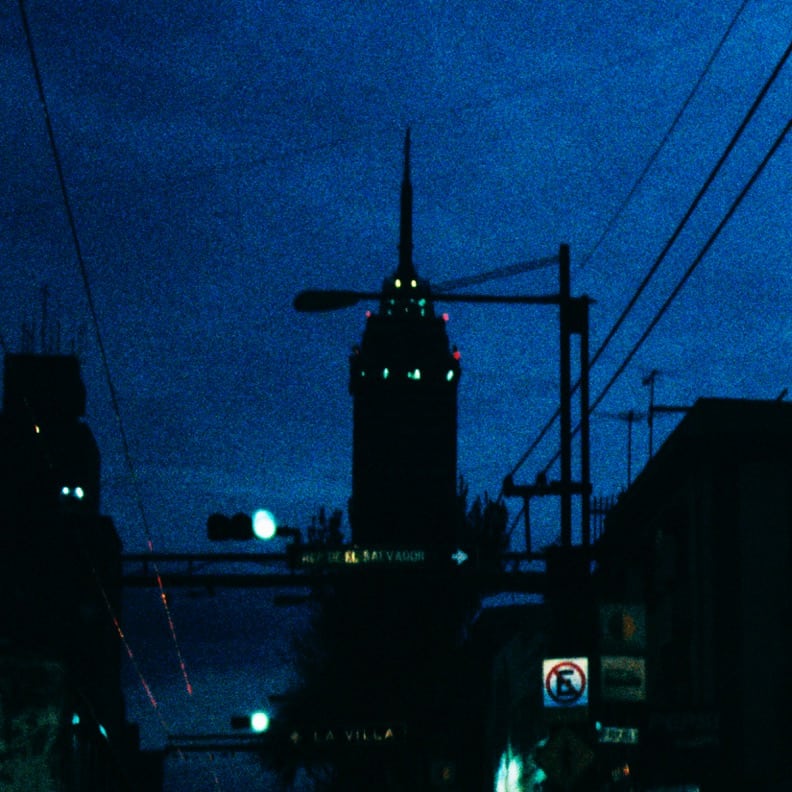

Part of Melanie Pullen's Mexico Series
It seems as though you’re playing with a lot of that, in the Crime Scene work, specifically.
I play with the concept of small talk with really heavy subjects. Like, let’s take in, see how oblivious people can be to it.
Are you conscious of creating a tension in the work, i.e. Spirit in the Sky alongside an ax murder?
I’m really into dichotomy, so yes, totally. Mixing, exactly. And then, where do people’s minds go with that, like, suddenly there’s a six year old watching my performances and loving it, and you’re thinking, “how are the parents okay with that?” But the music’s there, and it’s fun! When you start mixing the layers, you can really screw with people really easily!
I was talking to a photographer about this yesterday, about creating a dichotomy, or tension, or push-and-pull, and it’s that quality that separates a pretty photo from a good photo, because you’re forced to engage with it.
Yeah, exactly!
You can’t just scroll past it, you’re forced to engage with it.
Well, I’m really into breaking through social barriers. When you walk into my house, the first thing is, there’s a little entry way before you get in, and it’s just a giant photo of a hanging woman. You could have a beautiful photo there…
Anyone could do that.
Yeah yeah, like a butterfly, but who really cares? You know?
It won’t necessarily evoke a reaction.
Yeah, I wanted to break through. And that being said, it’s there and still, it’s tough to break through social veneers. It takes A LOT.
It’s a more permissive society. You can show Walking Dead and your photos, you couldn’t have shown them maybe six years ago.
Even ten, when the series first came out, it was really controversial. A lot of feminists hated my work, and then it came full circle. They all got it. My self portrait was in Elle Magazine, and there’s nudity and death, and that was…they weren’t allowed to do that back then, and the photo was very small, but it actually changed the rating system for the magazine. But now, looking at stuff now, anything goes. I feel like fashion magazines are more pornographic than Playboy used to be!
Yeah, and Playboy actually doesn’t show nudes anymore.
They don’t show nudes anymore! What’s the point, it’s all on the internet in a click.
It takes away the transgressive aspect, it’s really safe now. Anybody can read Playboy, you can read it in the park…
A kid could read it!
So then, why would you want to buy Playboy?
That’s so weird! Yeah, it’s true!
It seems like there’s the work you promote, which is of a piece, but then there are these side projects, which are far more disparate.
I have my personal things I do, yeah, that’s why I haven’t shown that, it’s for me, I do those more for me.
And one last question: Which do you prefer, the process or the result?
I think I enjoy process more than the result. That’s where everything happens. When I’m done all of that is just a memory.
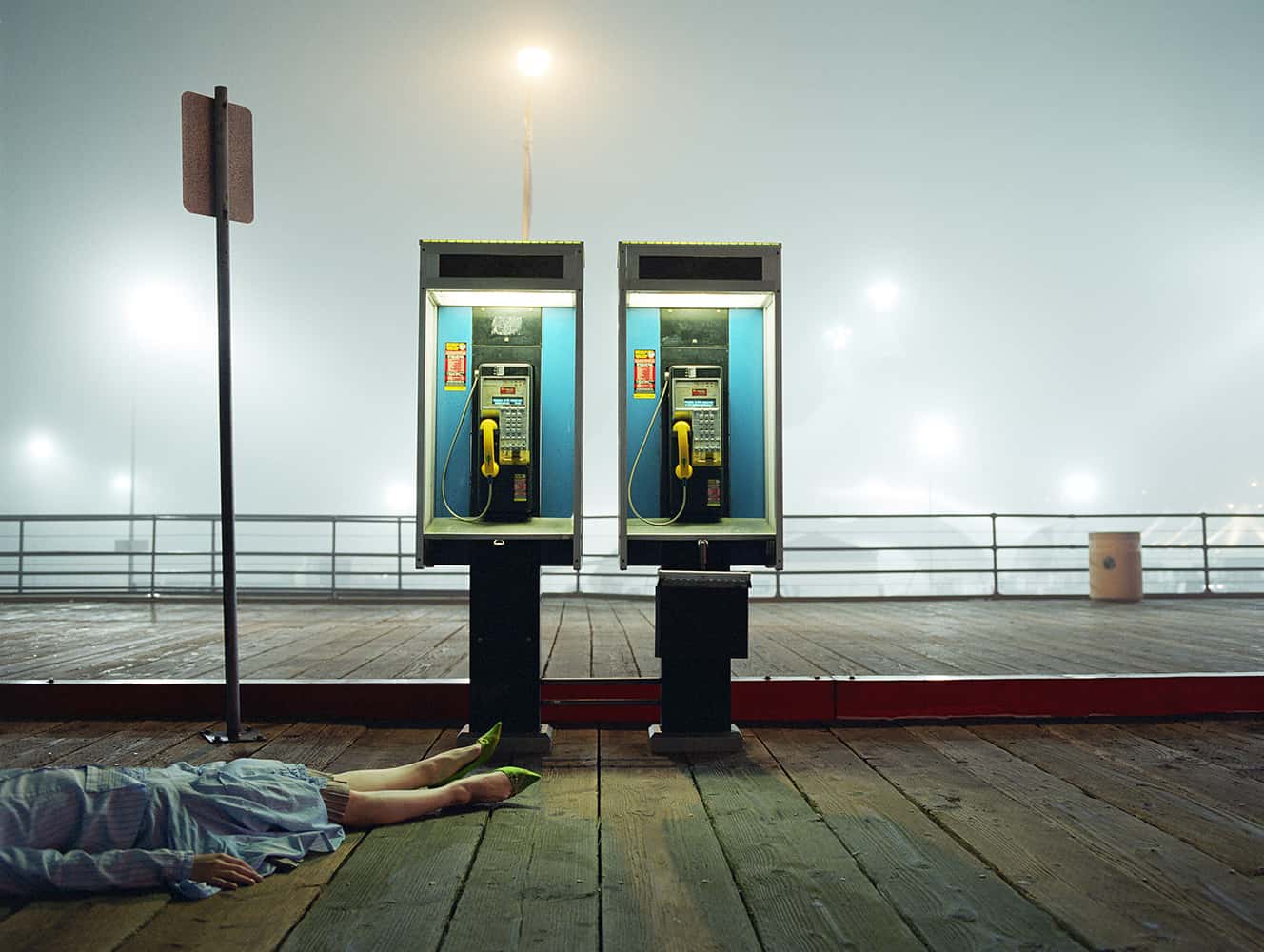
From High Fashion Crime Scenes 2003-2016